Buried under the Historic Center of Mexico City and the striking beauty of its Colonial-era palaces lies the ancient city of Tenochtitlan, the last bastion of the Aztec empire. You can still see the remains of old pyramids sitting next to major cultural hubs such as the biggest square in Mexico and many museums.
Art and architecture thrives in the Historic Center of Mexico City -a UNESCO World Heritage Site- where masters like Diego Rivera created amazing murals that narrate the history of Mexico.
Disclosure: This post contains some affiliate links. If you make a purchase through those links I will earn a commission at no additional cost to you (zero, nada). To check the full disclaimer, click here.
These are the best things to do and see in the Historic Center of Mexico City
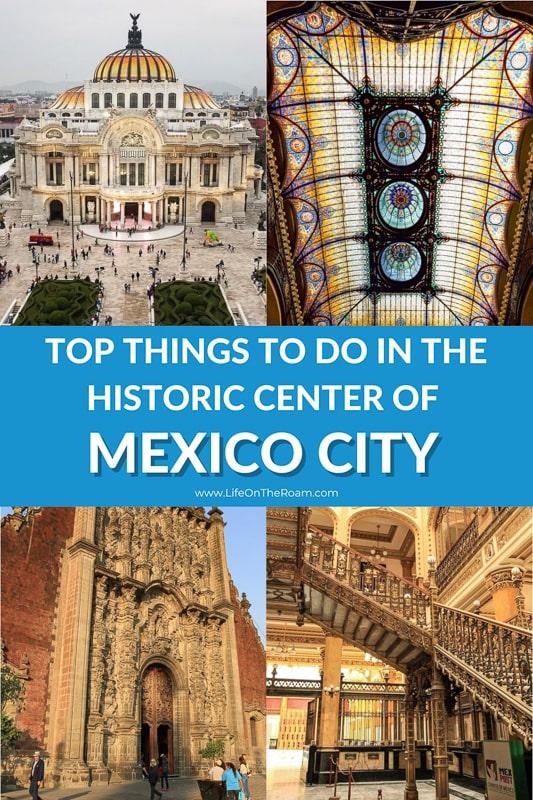
Table of Contents
See Gardens, Patios, and Amazing Murals in the National Palace (Palacio Nacional)
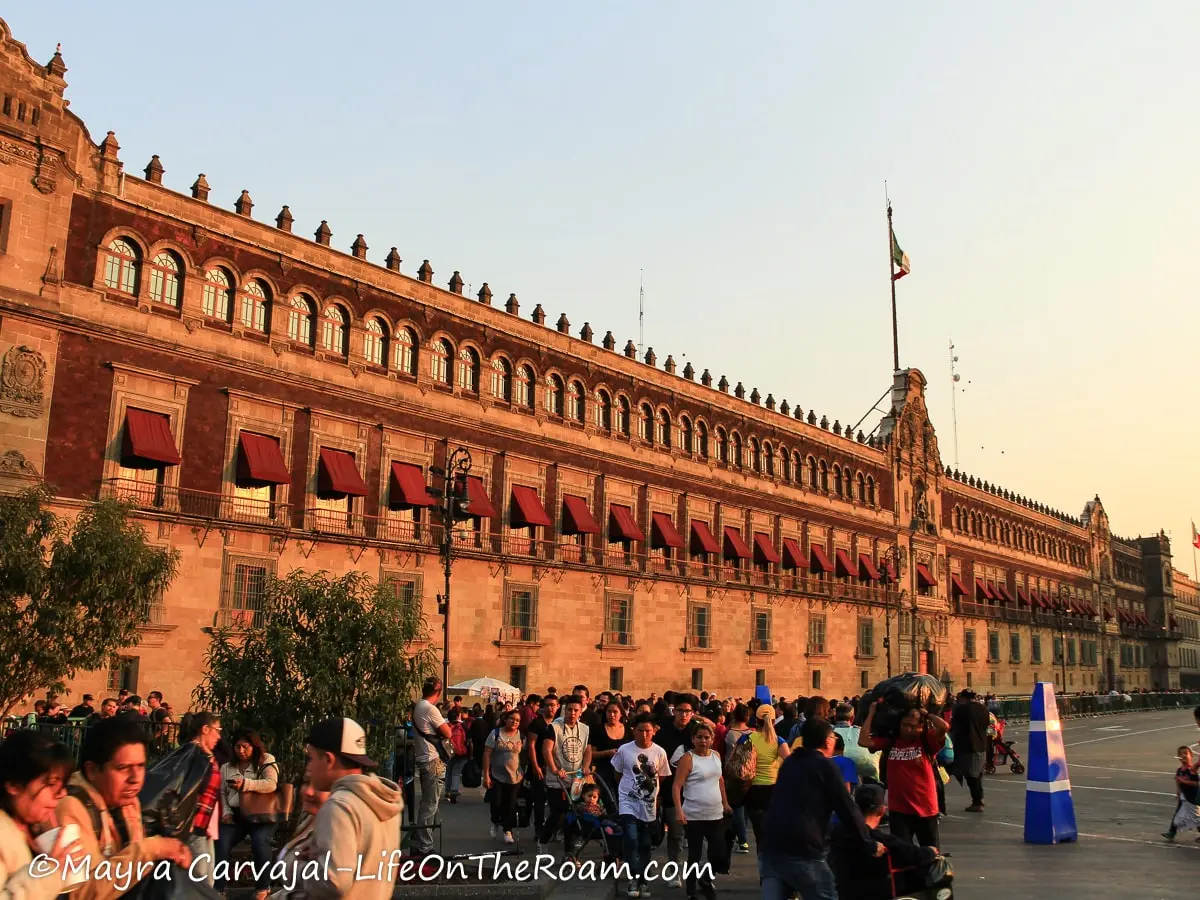
Moctezuma, the last Aztec emperor, walked proud and tall around this same spot that was his palace, with his own zoo with birds and jaguars.
Until Hernán Cortés arrived.
When you see all the concrete it’s hard to imagine that waterways crossed this land. The same land where Cortés built his own palace over the ruins of Moctezuma’s. The National Palace then turned into the seat of the vice regal government, the seat of the Republic and the parliament, the residence for several presidents, a military compound, and now a museum with gardens.
On the ground floor you’ll find the Central patio, with a seemingly never ending line-up of tall arches surrounding a bronze Pegasus fountain, and the Mariano patios, used as a military jail from the late 17th century to mid 19th century, where you’ll see some remnants of the Templo Mayor (Great Temple) through the “archaeological windows”.
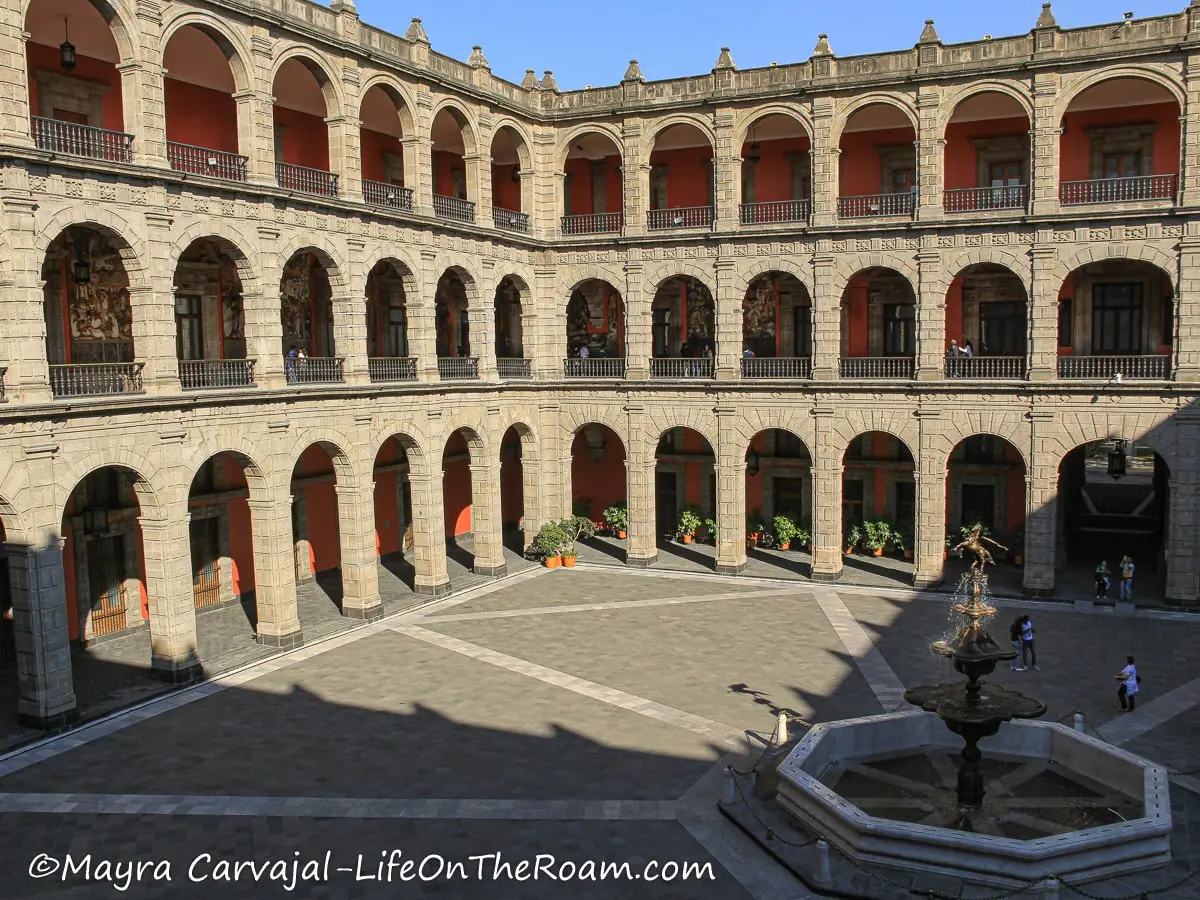
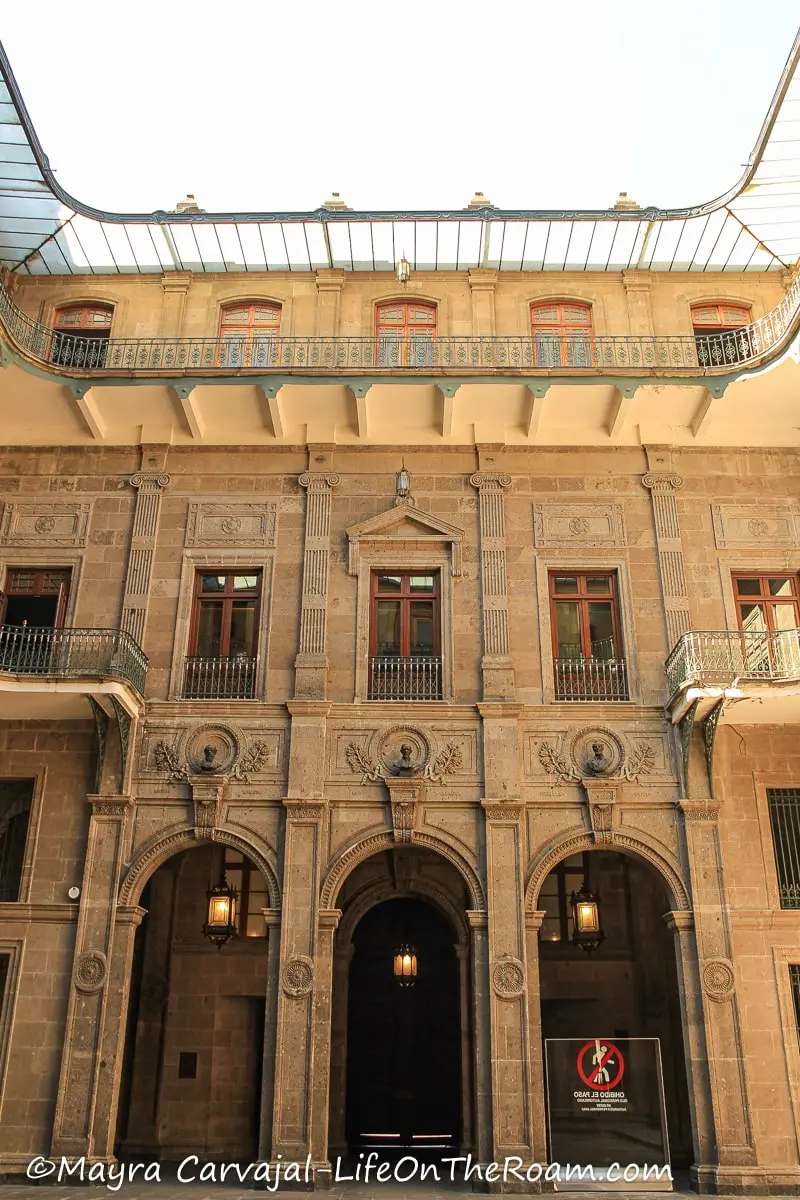
Here you can also visit the Benito Juárez Site Museum to learn about the life of one of the most respected presidents of Mexico. He was born in Oaxaca and was in power from 1861 until his death in 1872.
If the name Benito Juárez rings a bell that’s probably because you’ve seen it on a street sign, a square, a school, or at the airport. He’s everywhere, including the 500-pesos bill and the soon to be withdrawn 20-pesos bill.
He was a highly esteemed figure who reinstated the Republic after Maximilian of Habsburg briefly ruled the so-called Second Mexican Empire before being executed in Santiago de Queretaro . He separated church and state, and was behind several projects to rebuild the country.
At the small museum you can see Benito Juarez’ living quarters -with typical 19th century furniture and arrangement-, personal belongings and artwork dedicated to his life.
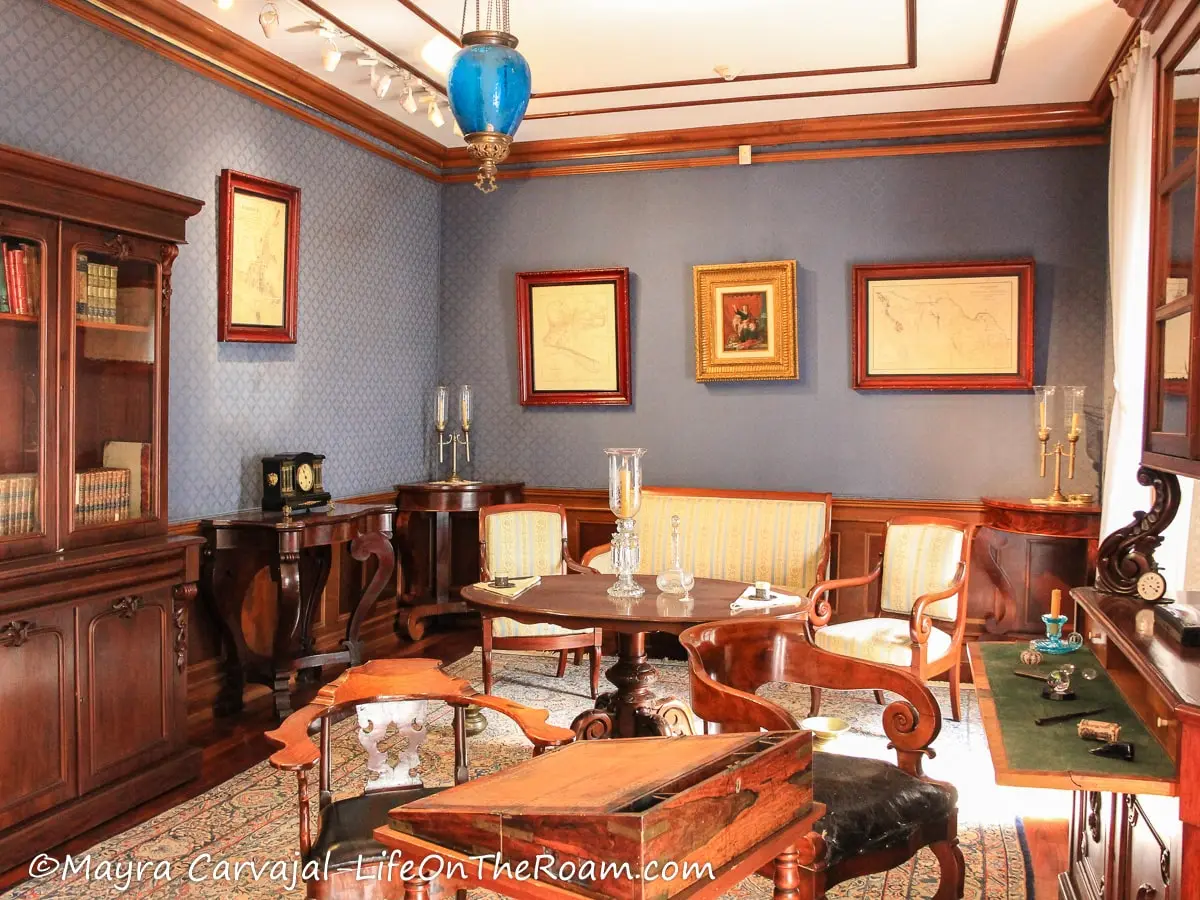
Most palaces are embellished with gardens and Mexico City’s National Palace isn’t the exception. You’ll find a respite from the craziness of the city in the Empress Garden among trees, fountains, sculptures, promenades, and cats.
There’s also a small botanical garden where you can see a variety of succulent plants of all sizes, which isn’t a surprise since Mexico is the country with the greatest variety and number of succulents.
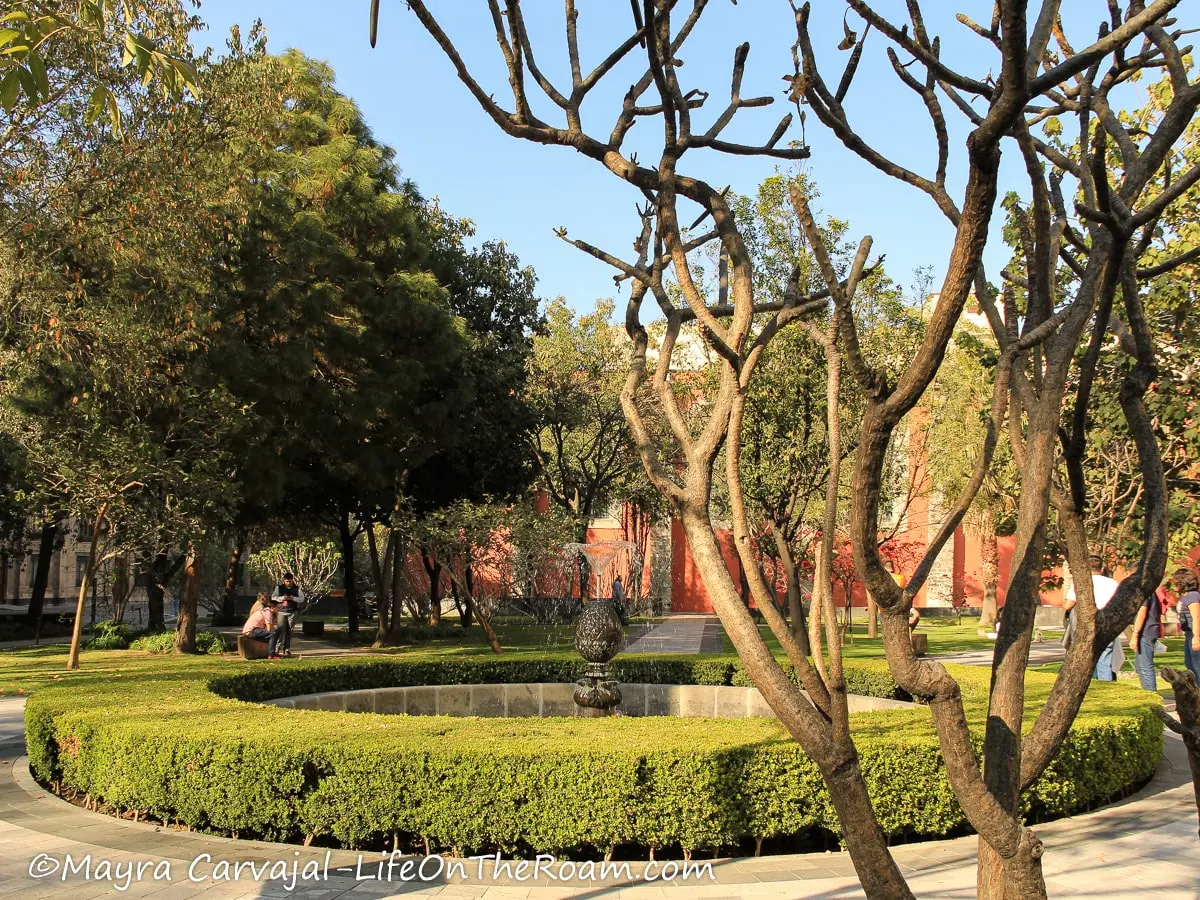
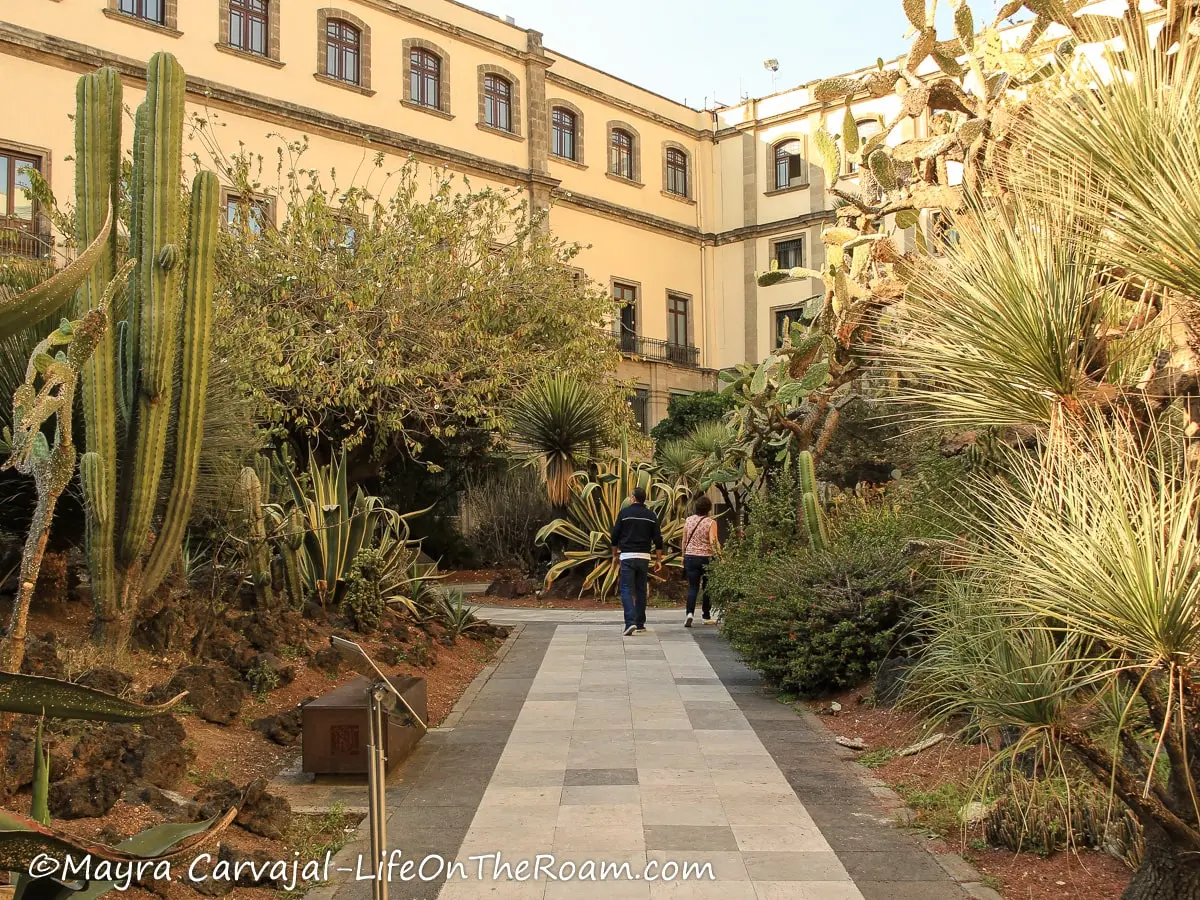
On the second level a masterpiece awaits for you, a must-see in the historic centre of Mexico City. If you have time to see only one thing at the National Palace, go straight to the main staircase leading to the second floor and check out the massive mural painted by Diego Rivera, titled “Epic of the Mexican People ”. He started it in 1929, completing the 275 sq.mt (2,960 sq. ft.) mural six years later.
The fresco on the north wall is titled “Ancient Mexico” where the theme is the religious beliefs of the Aztecs.
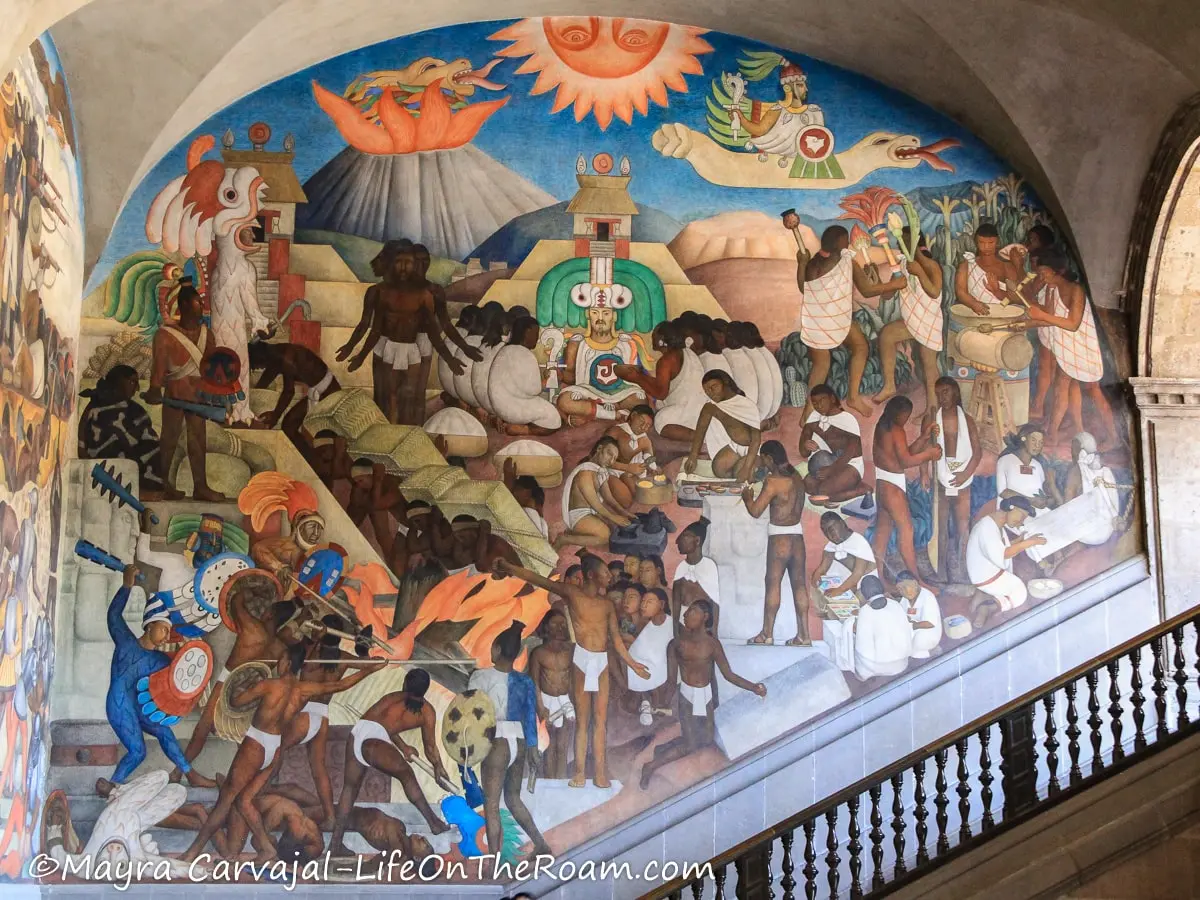
The blonde guy with the Quetzal feathers headdress is Quetzacoatl, who travels on a serpent-like boat. The left side shows the destruction and slavery caused by Huitzilopochtli, the god war. The right side shows people practicing agriculture and arts and crafts. The sun is upside down, telling us that the scene takes place at sunset.
The one in the centre, “History of Mexico (From the conquest to 1931)” depicts the period between the colonization and 1931.
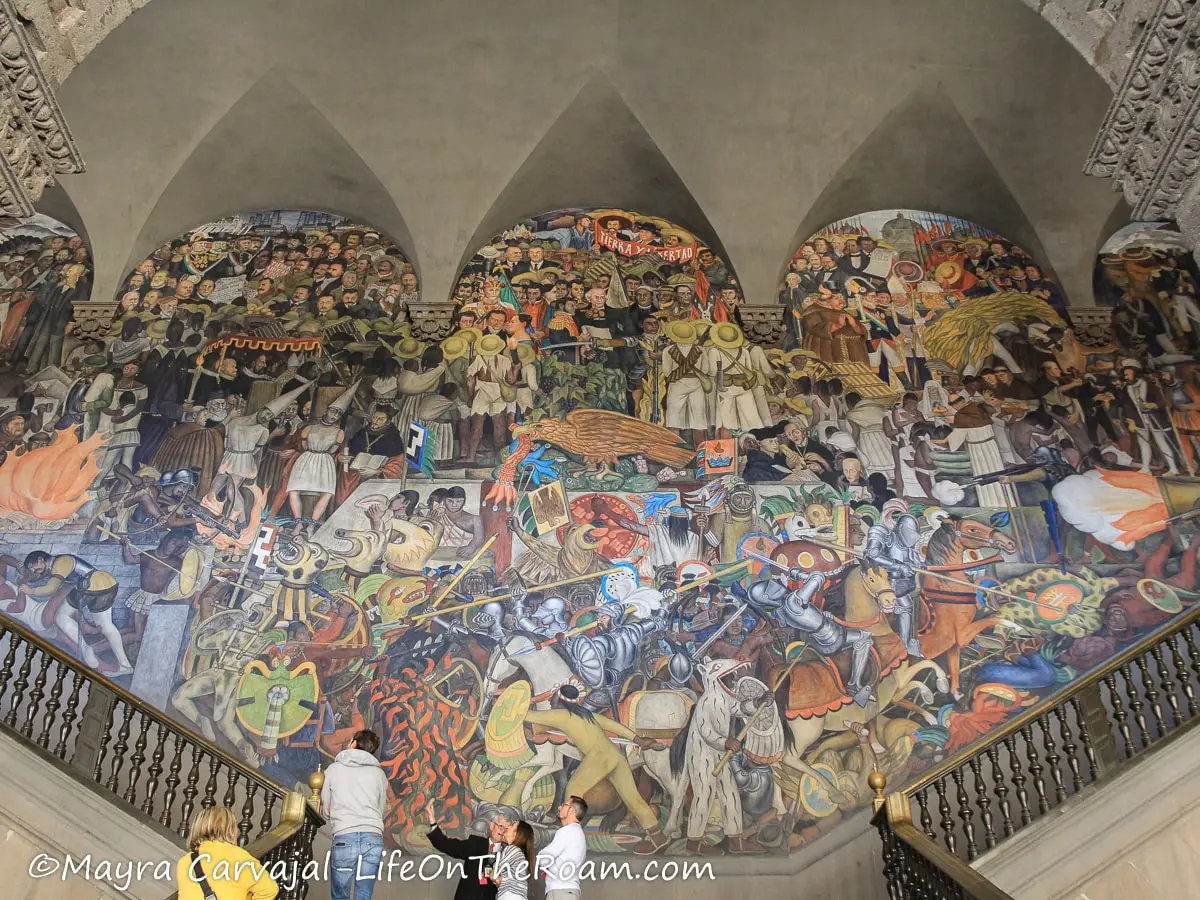
The fresco on the south wall, “Mexico Today and Tomorrow” is Diego’s critique of the capitalist system which he saw as the root of all problems, and his proposed solution: Marxism.
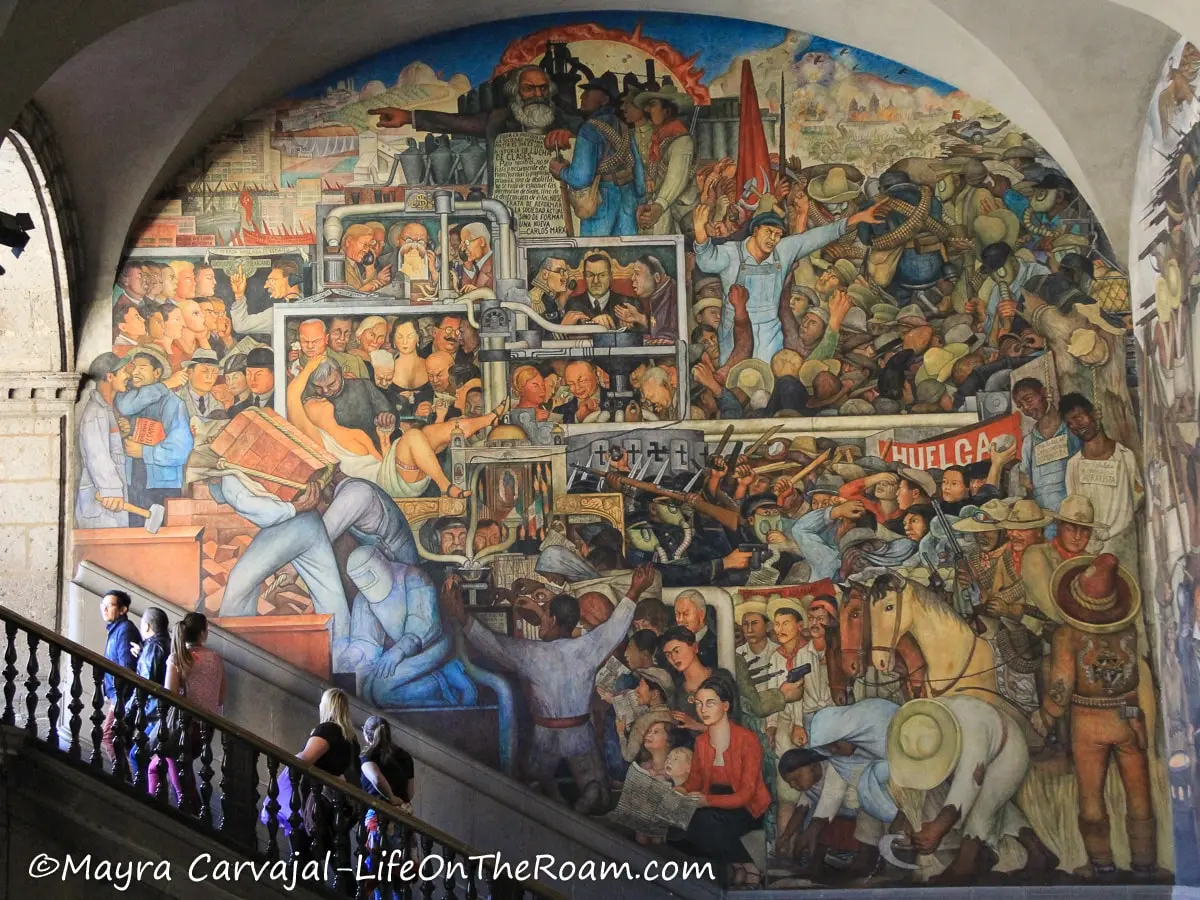
More mural awesomeness is around the corner when you walk along the second floor corridors. The scenes depict elements of the pre-Hispanic culture (with agriculture taking a prime role), the great market of Tlatelolco in Tenochtitlán (what you would see around here if you would go back 500 years in time), and the arrival of the Spaniards.
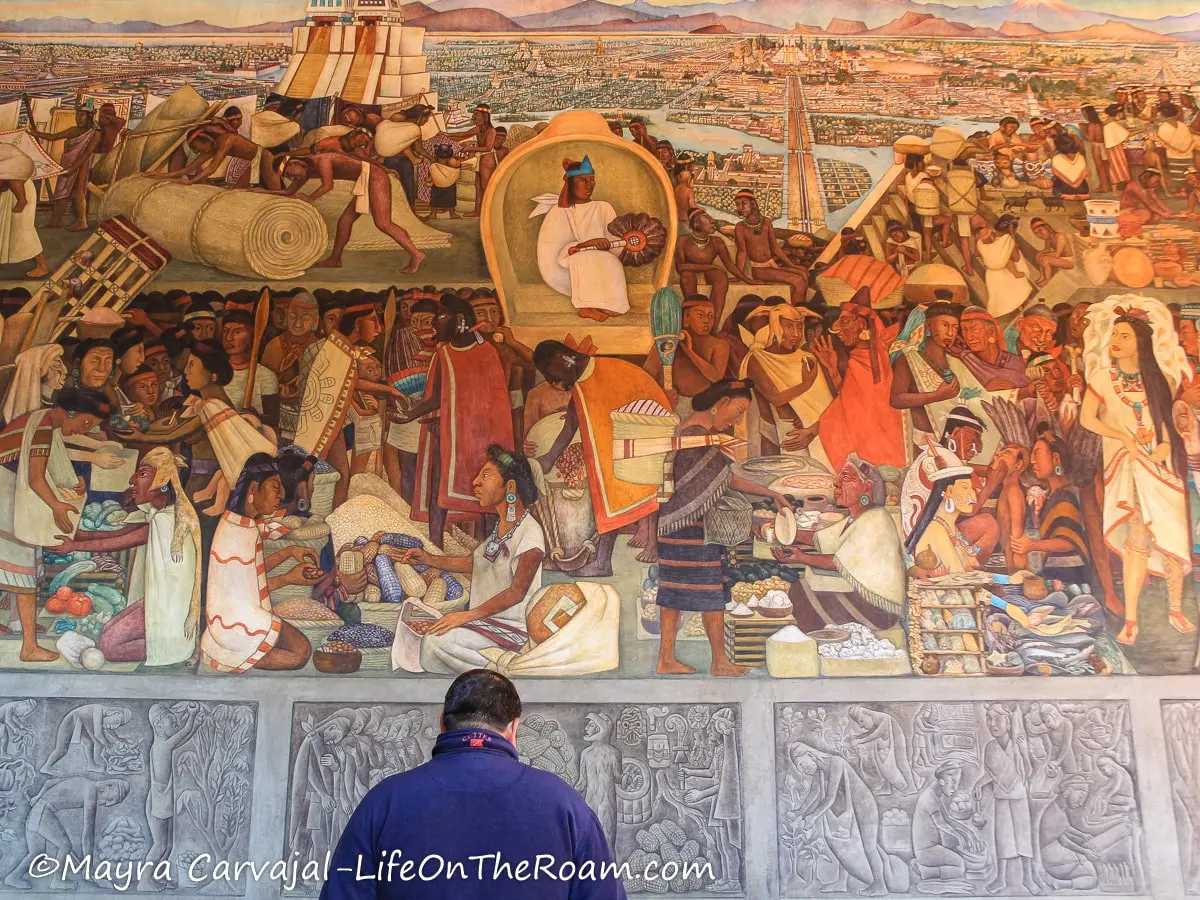
Keep your eyes peeled for Diego’s wife, Frida Kahlo, in several murals. How many Fridas can you spot?
Plaza de La Constitución, Historic Center; Closest subway station: Zócalo-Tenochtitlán (Line 2); Open Tue. to Sun.: 9AM-5PM.; Free admission (must leave photo ID at the door).
See the Evolution of the Historic Center at the Zocalo Subway Station

The Zocalo/Tenochtitlán subway station drops you right at the heart of Mexico City’s Historic Center. But before you go back to the surface to see all the fabulous architecture and museums, check out the monumental scale models displayed in the station.
The models show you how the Historic Center area was before the arrival of the Spaniards (when its name was Tenochtitlan), its transformation during the early years of colonization, and its layout in the early 20th century (the closest to its current layout).
Take Part in Cultural Events at Plaza de la Constitución (El Zocalo)
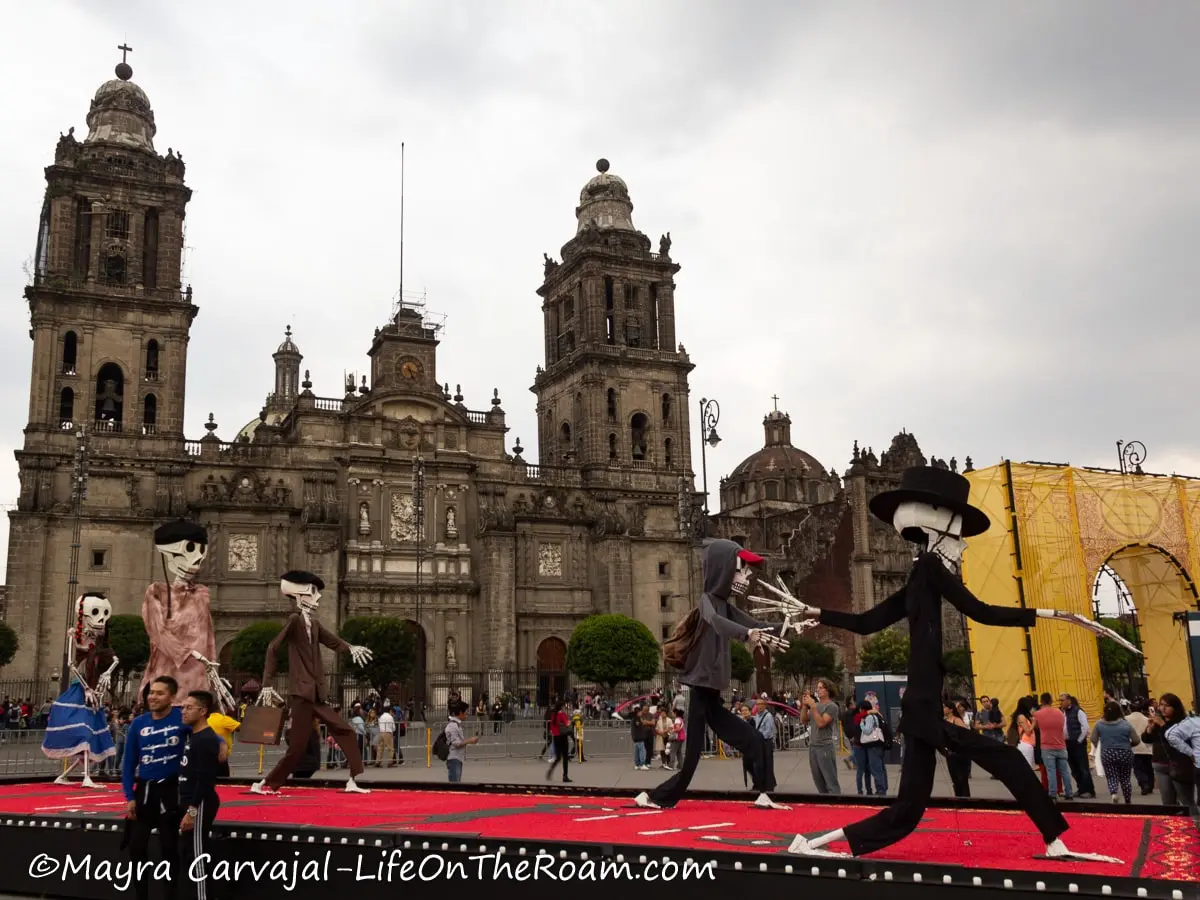
The downtown main square of Mexico City is called Plaza de La Constitución, better known as El Zócalo. It’s the biggest square in all Mexico with a whopping 46,800 sq. m (503,751 sq.ft.) and possibly the biggest flag I’ve ever seen.
The zocalo has been the heart and centre of the city since its name was Tenochtitlan, a sacred place for the Mexica civilization, with pyramids and altars and boats cruising around (this was a lake).
The square, surrounded by iconic buildings such as the Metropolitan Cathedral and the National Palace, is a major hub of cultural events year round. There’s always something going on here.
You can catch concerts, fairs, art and dance performances, hop on a skating rink during winter, or see Christmas lights or huge Day of the Dead displays.
Closest subway station: Zócalo-Tenochtitlán (Line 2)
Visit Mexico City’s Metropolitan Cathedral (Catedral Metropolitana)
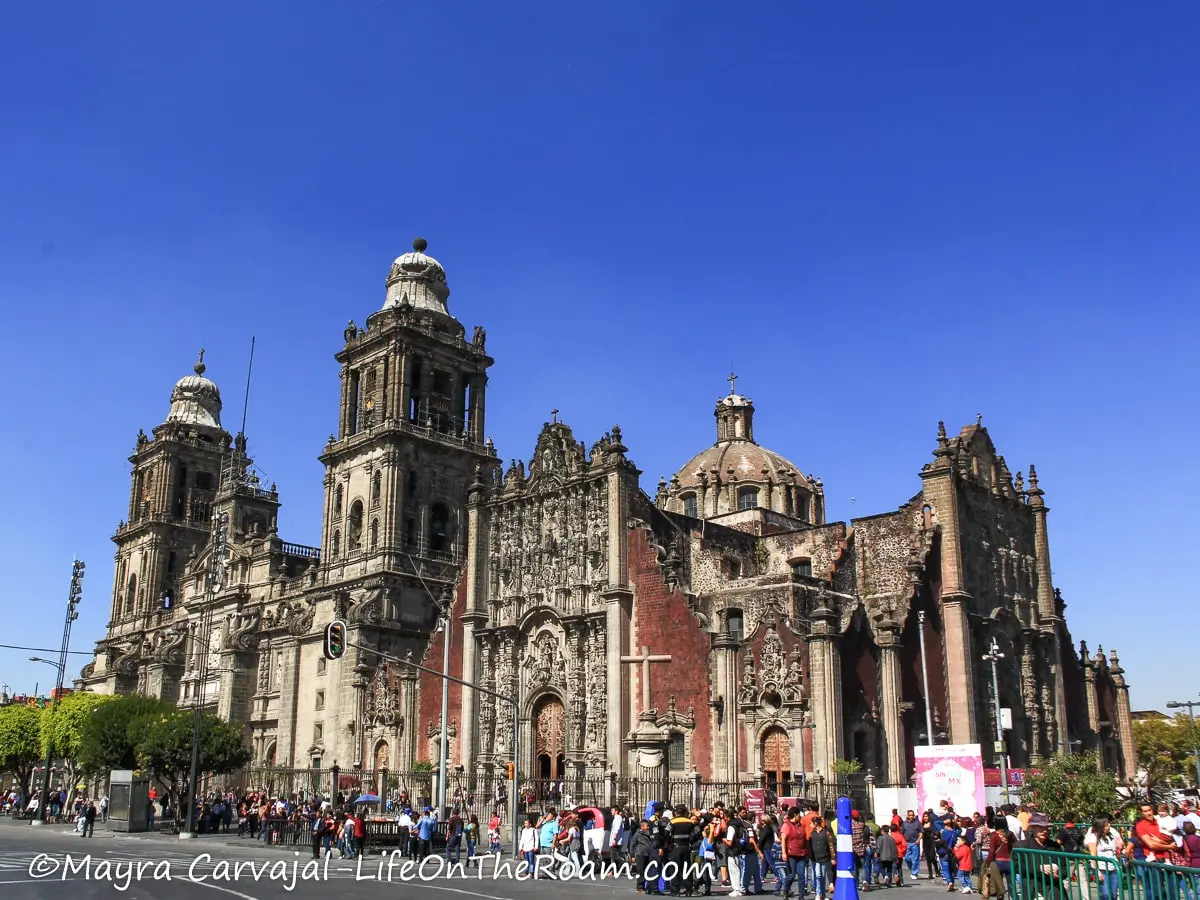
In the 16th century Hernán Cortés, the infamous Spanish colonizer, learned that this point was a sacred location for the Aztecs (a central axis in the old city of Tenochtitlan). Then he said something like Let’s build the first cathedral of America right here, where Quetzacoatl’s temple is. And to build it, tear down these pyramids and use the rubble as construction material.
Four centuries later, one of the most impressive samples of vice regal artwork still stands. Paintings, sculptures, woodwork, and ironwork adorn the 14 chapels that are open to the public, where nearly every swirl is covered in gold leaf.
The architecture and the interiors are an amalgamation of the different styles prevalent over the span of its construction: neoclassical, baroque, gothic, and churrigueresque.
One of the shortest altars -but not less spectacular- is the Altar del Perdón (Altar of Forgiveness), flanked by two balconies built around two monumental columns. The name comes from its location in front of La Puerta del Perdón (the Door of Forgiveness). This is the huge wood door located between the two bell towers and through which penitents came for redemption centuries ago.
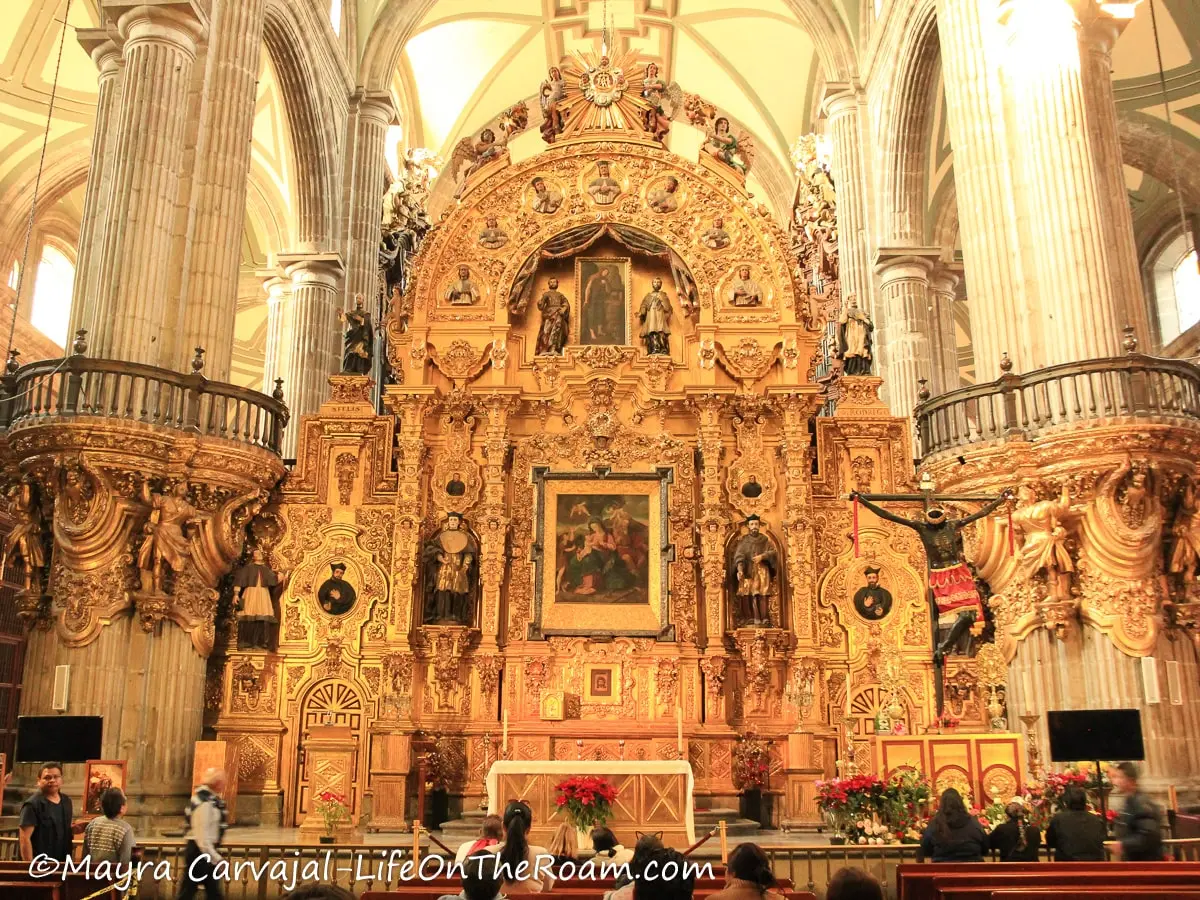
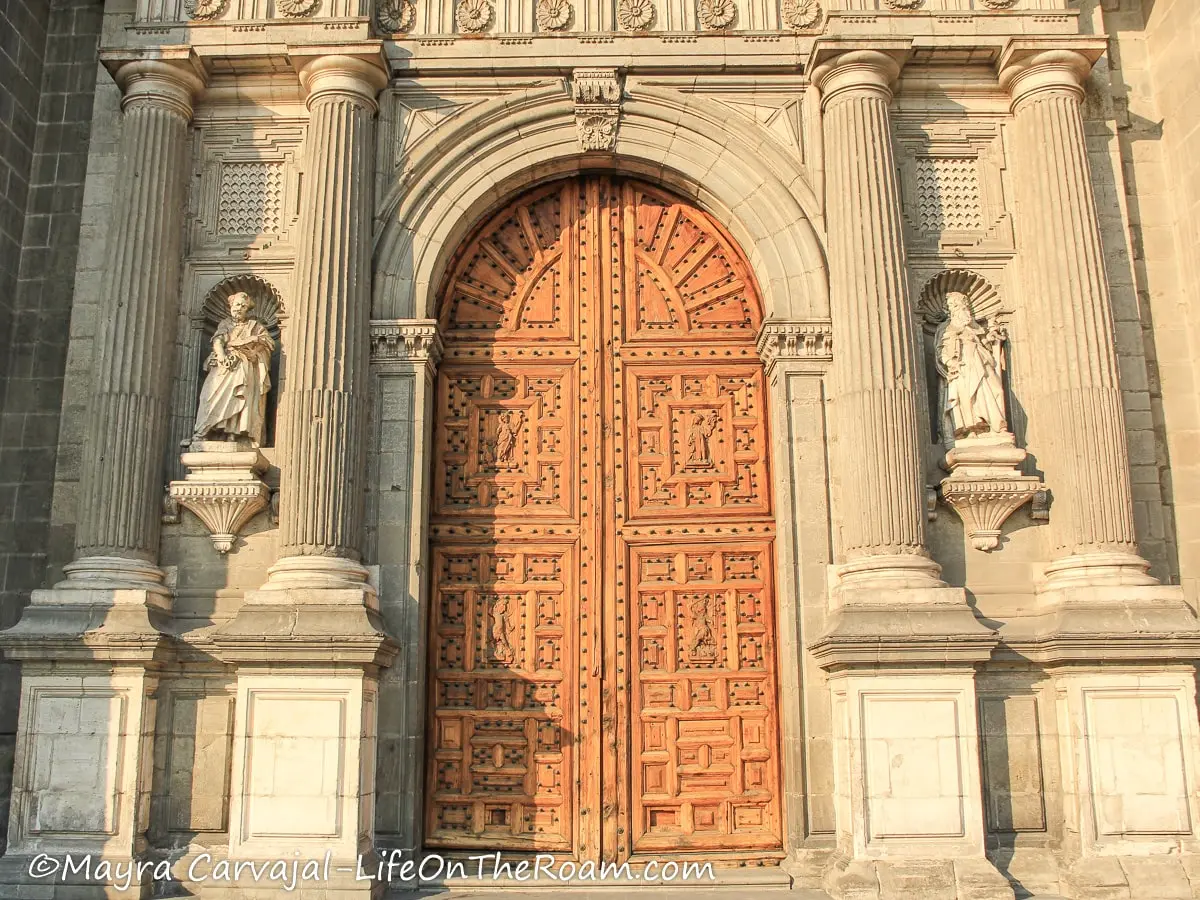
Most of the altar had to be redone after a fire broke out in 1967.
Right behind the Altar del Perdón you’ll find the choir section, enclosed by beautiful iron gates and where you can see the impressive pipes of the only working twin organs in America. They were built in Spain in the 18th century, assembled in the cathedral, and restored after a fire.
The stunning woodwork of the seating area is a reproduction of the original, which also succumbed to the fire of 1967.
But the most spectacular artwork in the Mexico City Metropolitan Cathedral is the Altar de Los Reyes (the Altar of the Kings). It was built in the 18th century in Churrigueresque style, a Spanish Rococo similar to a Baroque on caffeine.
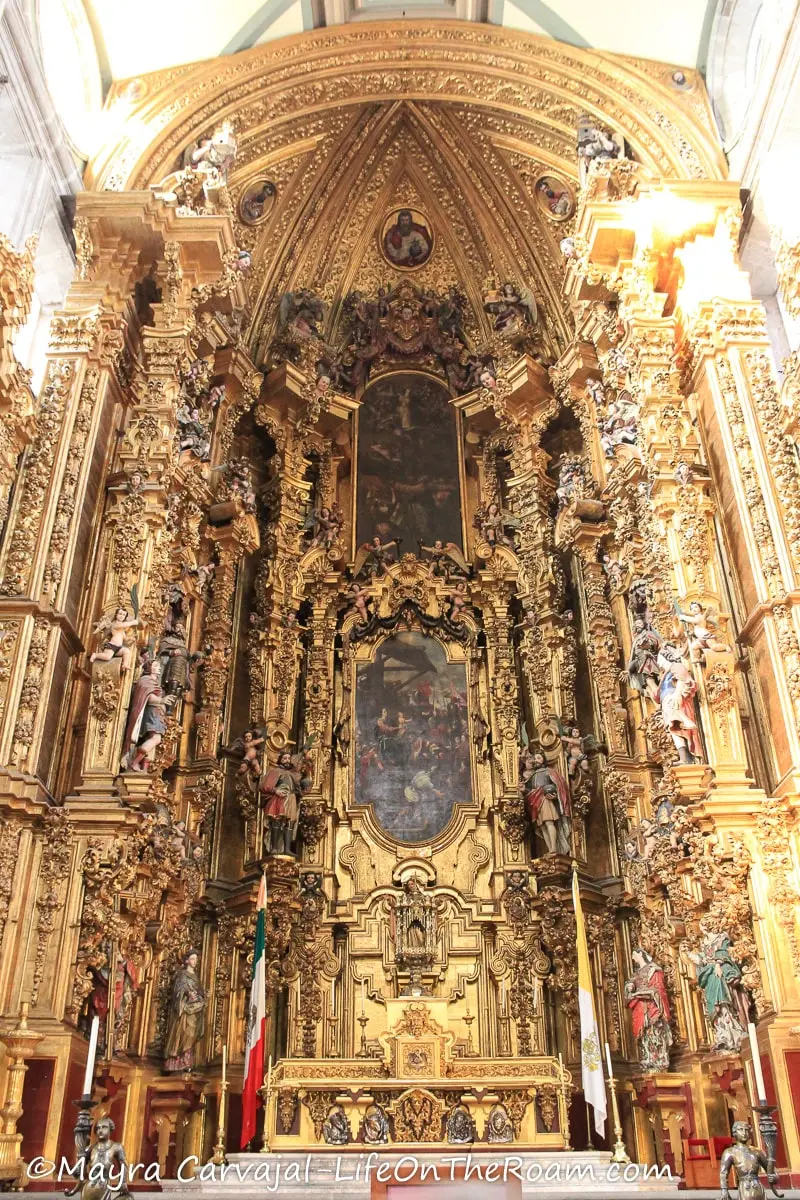
You can see other chapels displaying relics and paintings, such as the Chapel of Our Lady of Zapopán, completed during the first construction stage of the cathedral (1573-1615). The statue of Virgin Mary is a copy of the original, which is in Guadalajara, and it’s surrounded by oil paintings from the 18th century depicting martyrs, saints, and important figures of the Catholic church.
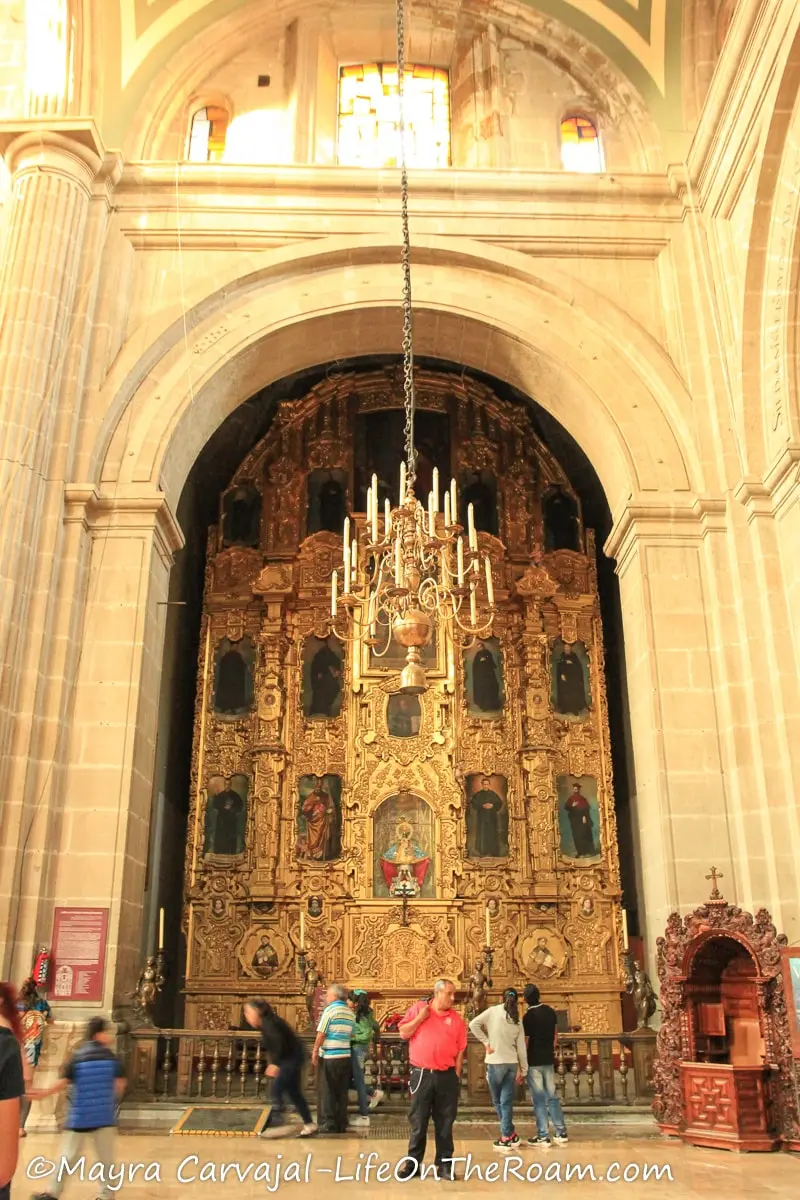
The cathedral is in constant need of work as sinking is an ongoing problem: Mexico City was built over a dried lake (Lake Tlatelolco). It isn’t uncommon to see scaffolding in the exterior and interior of the cathedral at any given time.
Closest subway station: Zócalo-Tenochtitlán (Line 2)
Admire the Huge Tiffany Glass Ceiling at the Gran Hotel de la Ciudad de Mexico
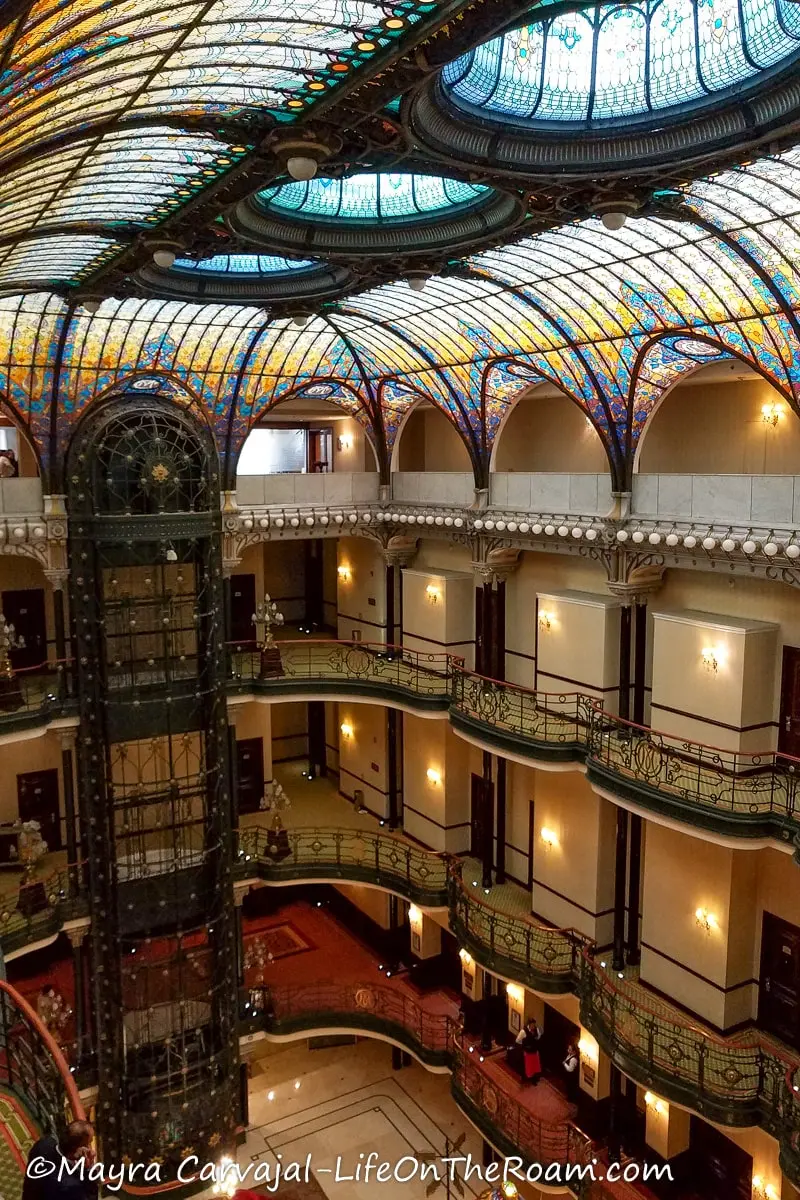
In the 16th century, this space was a private residence that was converted into a mall at the very end of the 19th century. For a dazzling splash, the owners hired French artist Jacques Gruber in 1908 to create one of the largest Tiffany stained glass ceilings in the world.
Then in 1968 the place opened as the Gran Hotel de la Ciudad de México, which has become one of the best Mexico City Historic Center hotels, with a prime location to explore what the area has to offer.
You can stay at the Gran Hotel de la Ciudad de México, a 5-star hotel with an average rating of 9.3, with unbeatable views of the zócalo, and with one of the best breakfast buffets ever.
Talking about the buffet, even if you don’t stay at this hotel, try the fabulous breakfast (with a view!) on a weekday. I loved the variety and the quality of the food, and it’s really more like brunch. You can also try the amazing weekend brunch served on the terrace, for which reservations are highly recommended.
Closest subway station: Zócalo-Tenochtitlán (Line 2)
Join a Walking Tour of the Historic Center
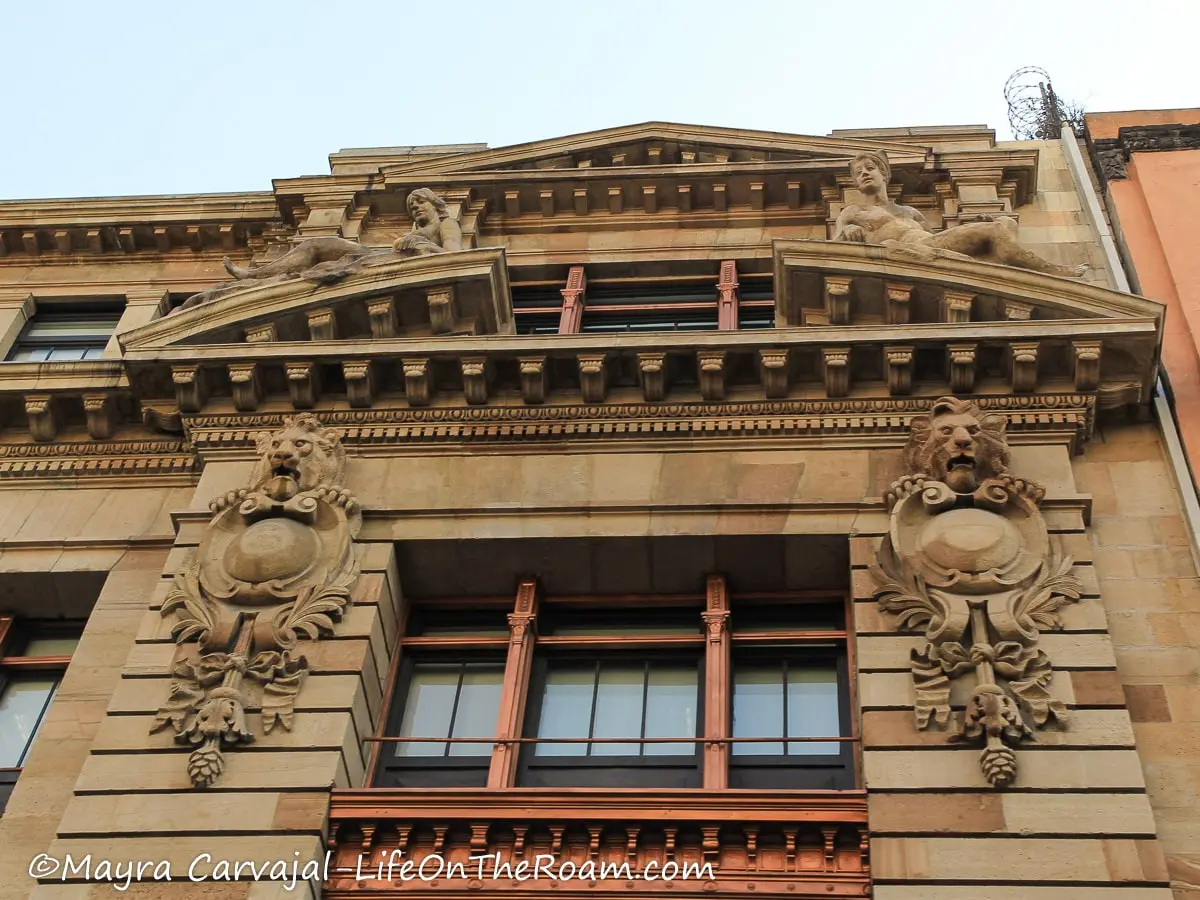
Walking is one of the best ways to explore the Historic Centre of Mexico City, and with so much to see and learn in terms of history, architectural gems, monuments, museums, and places to eat, a walking tour is a good way to get an overview of the treasures condensed in this area.
Check out these highly rated walking tours of the Mexico City’s Centro Historico:
-Historic Downtown Walking Tour: this 3-hour morning tour stops at the main points of interest, providing information about history, architecture, and food recommendations. Maximum 20 people.
Book this tour, with a rating of 4.9 based on more than 785 reviews.
-Historic Center Food Tour: discover the culinary treasures of Mexico City while you walk around markets, cantinas and eateries in the Historic Center. Vegetarian options available.
Book this tour, with a rating of 4.9/5 based on more than 890 reviews.
-Private walking tour of the Historic Center: this 5-hour tour is your best option if you want a private guide to learn about the history behind the main attractions of this area.
Book this tour, with a rating of 4.9/5 based on more than 75 reviews.
Hop On the Turibus Historic Center Route (Circuito Centro Histórico)
Don’t feel like walking, not much time on your hands, or want a quick overview of the area? The Turibus, a red double decker with an open top and audio guides in different languages is an option for you.
The hop-on hop-off bus stops at several points of interest along the Historic Centre and beyond, taking about 2.5 hours to complete the loop, which heavily depends on the crazy traffic of CDMX and the time of the day. The best way to plan your visit around each stop is to download the Turibus app, which shows the location of the buses in real time.
Even though I loved walking around the Historic Center of Mexico City I also took the Turibus and sat at the open top (bring sunscreen and a hat) for a closer view of the beautiful architectural details high up in the buildings.
Tickets are MXN$210 (you can buy them at the stop next to the Cathedral) and are valid for the entire day and for all the routes.
Turibus.com.mx; from 9AM to 7PM (service stops at 7PM no matter where you are), with a unit departing every 30 minutes (or so).
Stand Under the Fabulous Stained Glass Ceiling at El Palacio de Hierro Store
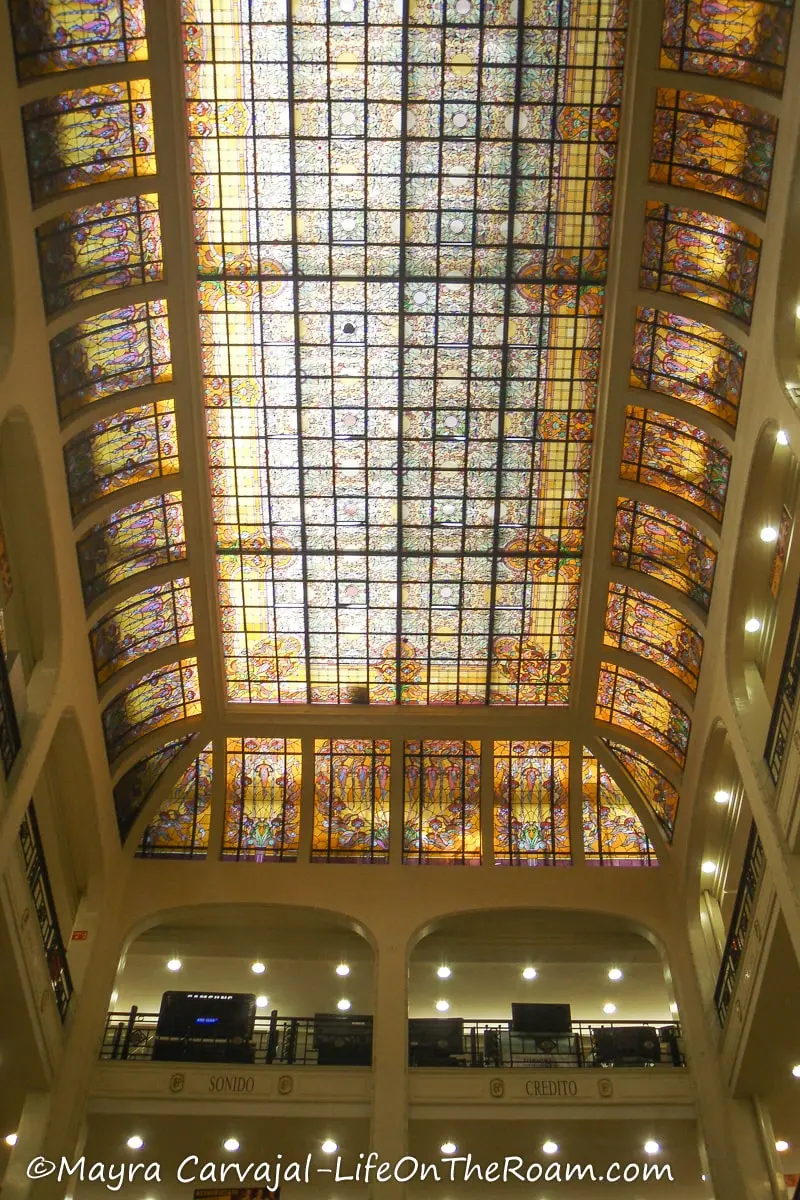
This was the first department store in Mexico, which opened in 1891. During its construction people looked at the monumental iron structure, started calling it “El Palacio de Hierro” (meaning “The Iron Palace”), and the name stuck.
After a devastating fire broke out in 1914 someone proposed installing stained glass for the ceiling and called French artist Jacques Gruber (the same who had worked on the stained glass ceiling of the Gran Hotel de Mexico a couple of years before), who created this masterpiece inspired in the Art Nouveau style.
Closest subway station: Zócalo-Tenochtitlán (Line 2)
Walk Among Aztec Ruins at the Grounds of the Great Temple Museum (Museo del Templo Mayor)
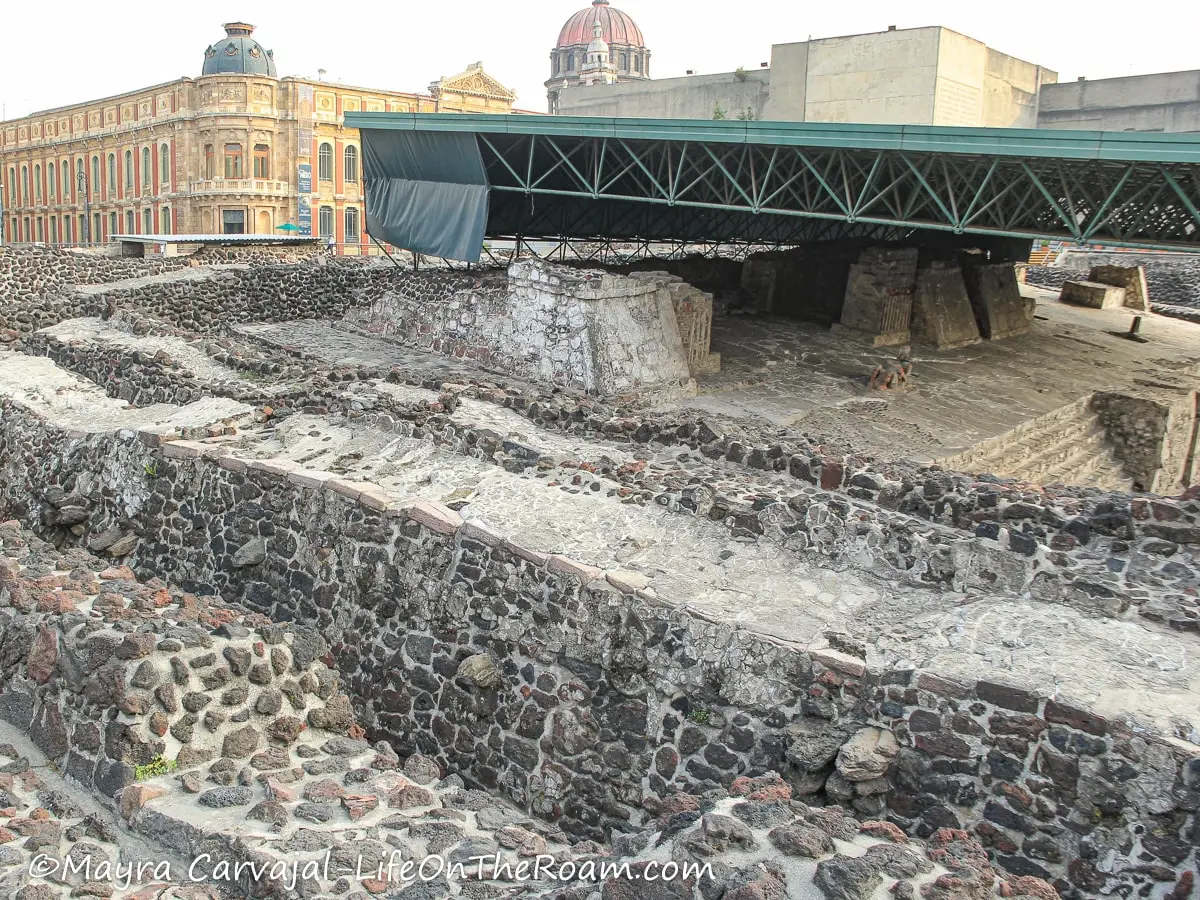
Peeking out among Colonial era buildings, Tenochtitlan (the ancient Aztec city built on an island inside a lake) refuses to disappear. I’m still here!, it seems to shout from its crumbled pyramid tops and temples with stone snakeheads sticking out of its walls, seated frogs sculptures, and scattered altars.

Sacred ceremonies and political events brought thousands of people to this place, and now millions of people visit this archaeological zone which is the most important historical site in Mexico City.
The wildlife that roamed around here and the chinampas (man-made patches of soil to grow crops on bodies of water) are long gone, but you can still walk around the remains of the Mexico City ruins downtown and see the layers showing the different construction phases.
There is a monumental model scale on site showing the layout of Tenochtitlan and how Aztecs arranged the pyramids following a cosmological order.
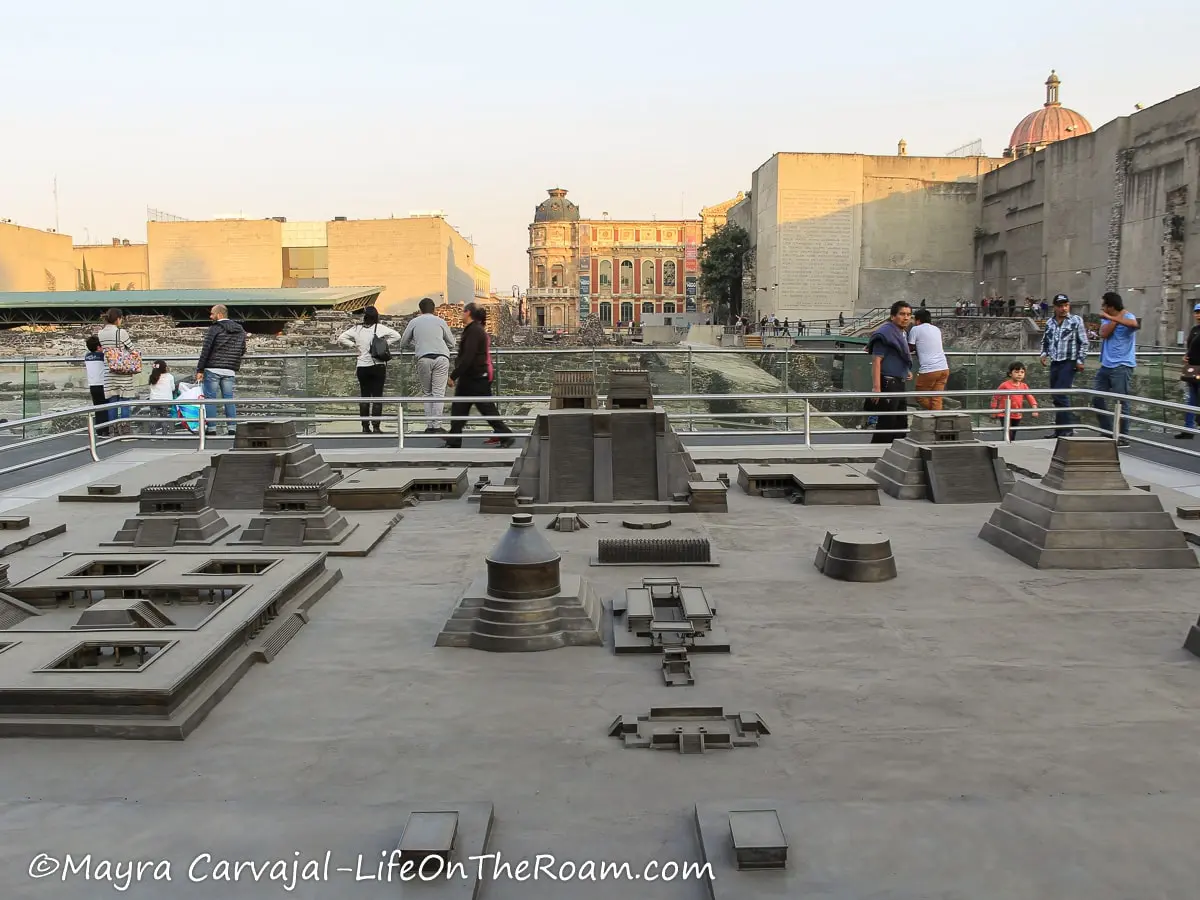
The Great Temple, built on what was the axis of their universe, was the tallest pyramid and the most sacred space in the Mexica world. Its long stair led to two shrines at the top: one in ochre dedicated to Huitzilopochtli -the god of war-, and one in blue dedicated to Tlaloc-the god of rain, representing the duality of the universe and how opposing forces work together. The rain brings prosperity in the form of crops and food, but drought leads to war.

In the House of the Eagles you’ll see beautiful decorative details carved in bas-relief, and in the North and South Red Temples you’ll recognize the sloping wall and panel style from Teotihuacan (which you can also see in the pyramid of Cholula). The 240 stone skulls on Building B form a Tzompantli altar where archaeologists found an impressive offering consisting of musical instruments and wolf skeletons.
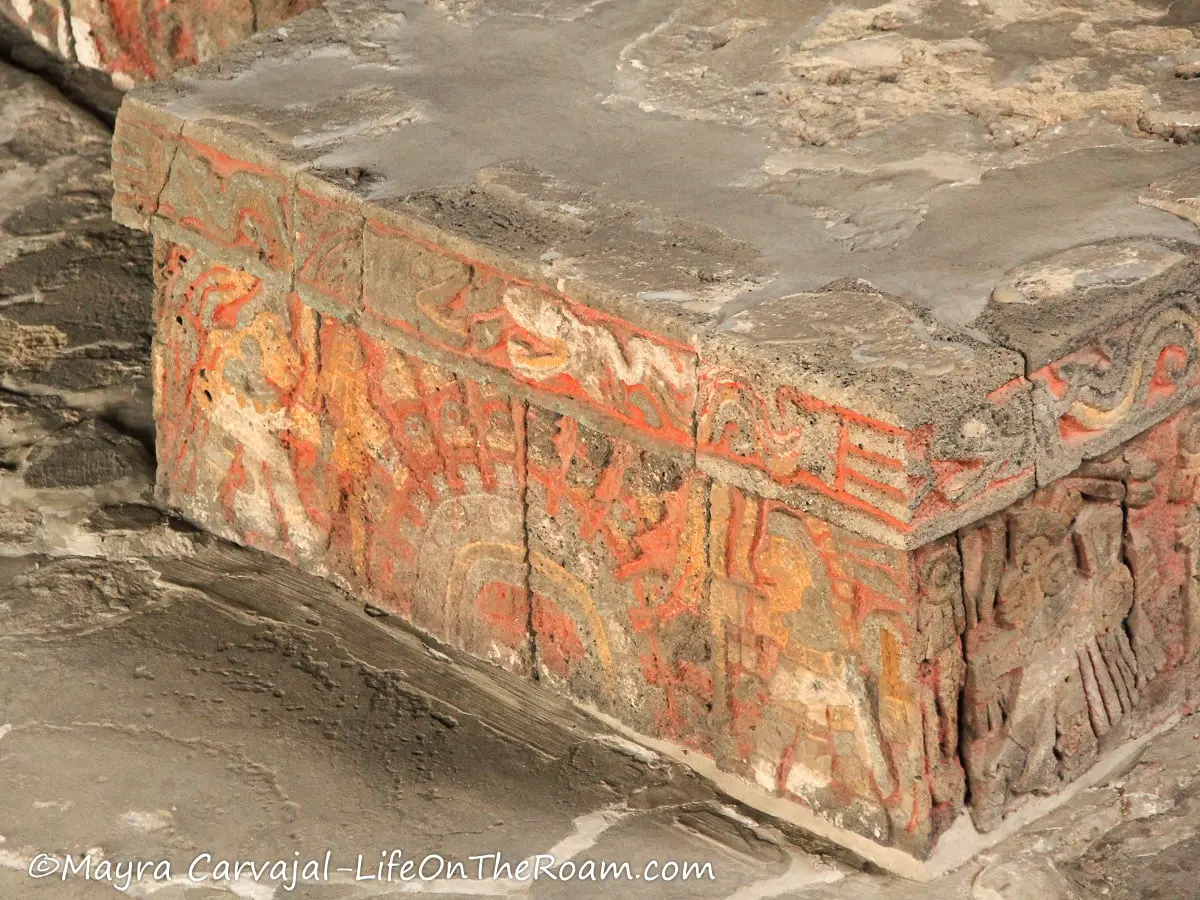
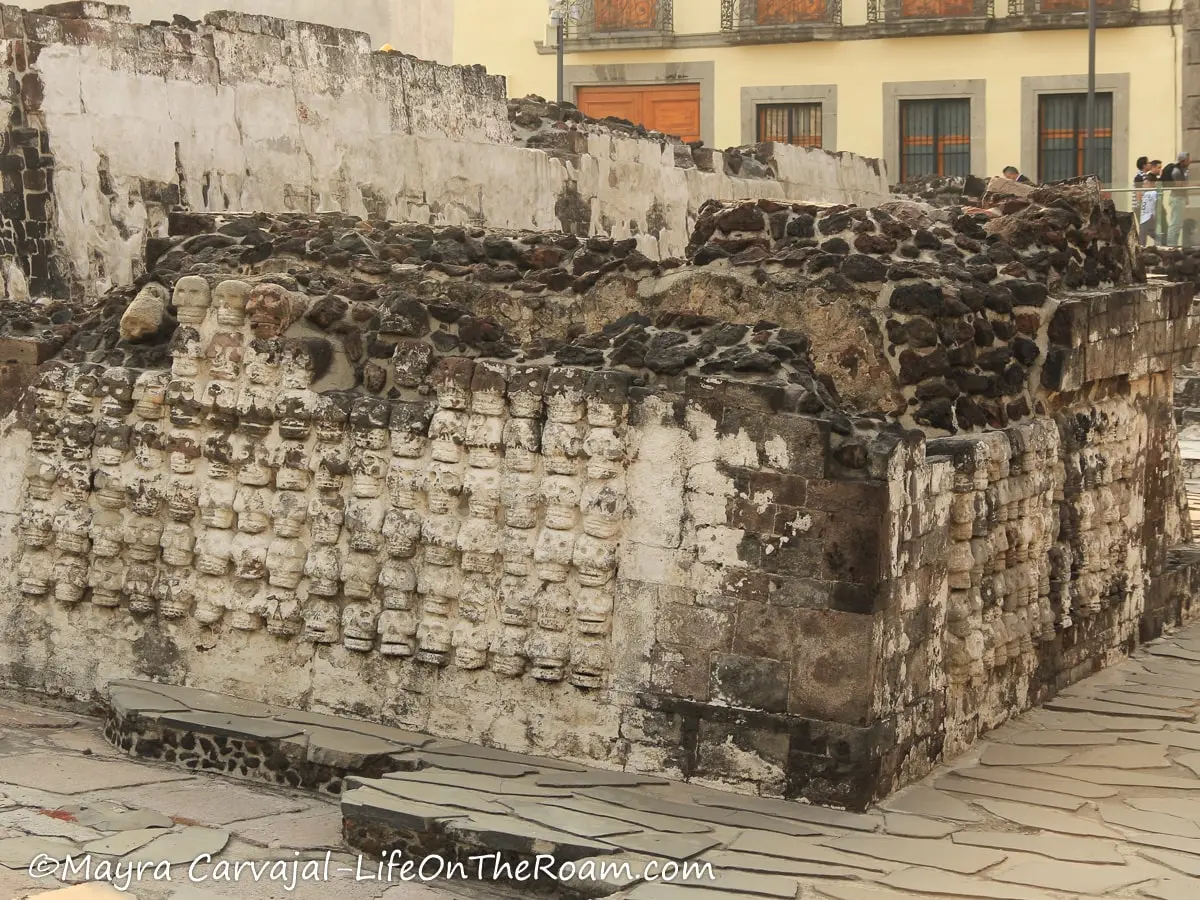
Enter the Museum of the Great Temple to see some of the 7,000 artifacts unearthed during the initial excavations, a number that has doubled over the years.
Two entire rooms are dedicated to the two main deities worshiped at the Great Temple, whereas other rooms hold objects that offer a glimpse of life in Tenochtitlan (agricultural practices, tax collection, commercial trade and military prowess).
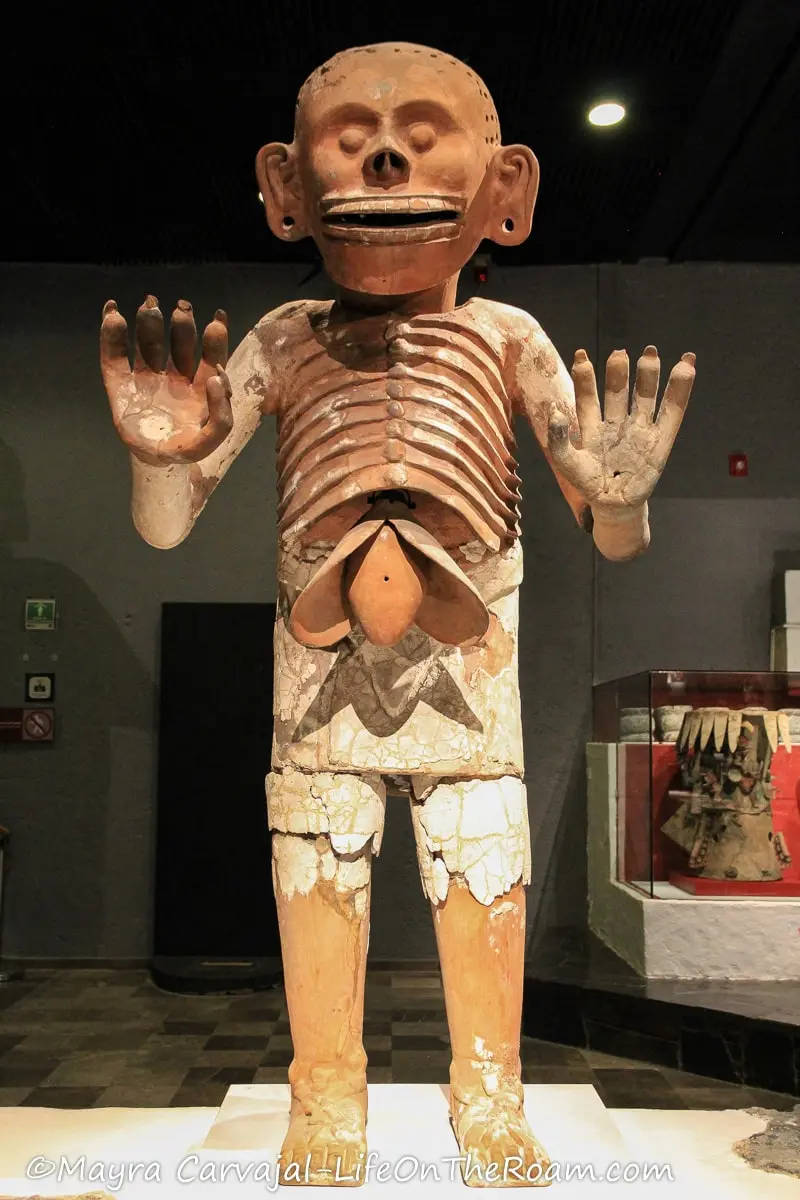
Some are funerary objects from the 14th century and most are offerings brought to the Main Temple in exchange for favours from the gods: Here’s this obsidian plate, can you help me win the war? Here are these two children, can you send us some rain?
You can also see architectural ornaments recovered from the temples and several sculptures, including the 3.25-metre diameter stone with the carving of Coyolxauhqui, a goddess with a terrible ending after her brother, Hutizilopochtli, kills her after she tries to kill their mother.
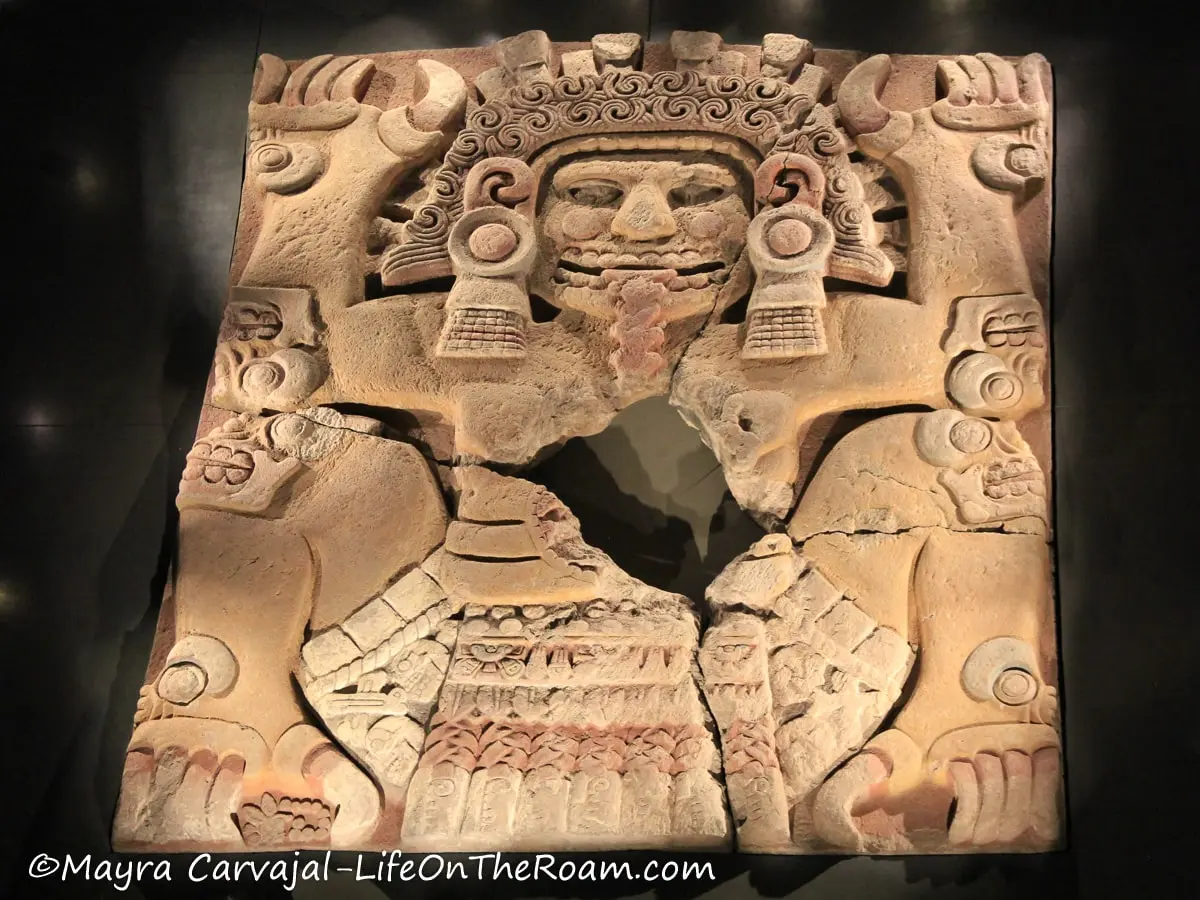
This is the sculpture found by workers of the electrical company in 1978, marking the start of the Great Temple project.
There’s a section about life after the Spanish conquest, when what we know today as Mexico City became the capital of the New Spain.
You can see a wonderful depiction of the Great Temple in Diego Rivera’s murals at the National Palace.
Open Tue. to Sun.: 9AM-5PM; General admission: MXN$90
See Diego Rivera’s Murals at the Secretariat of the Public Education Building
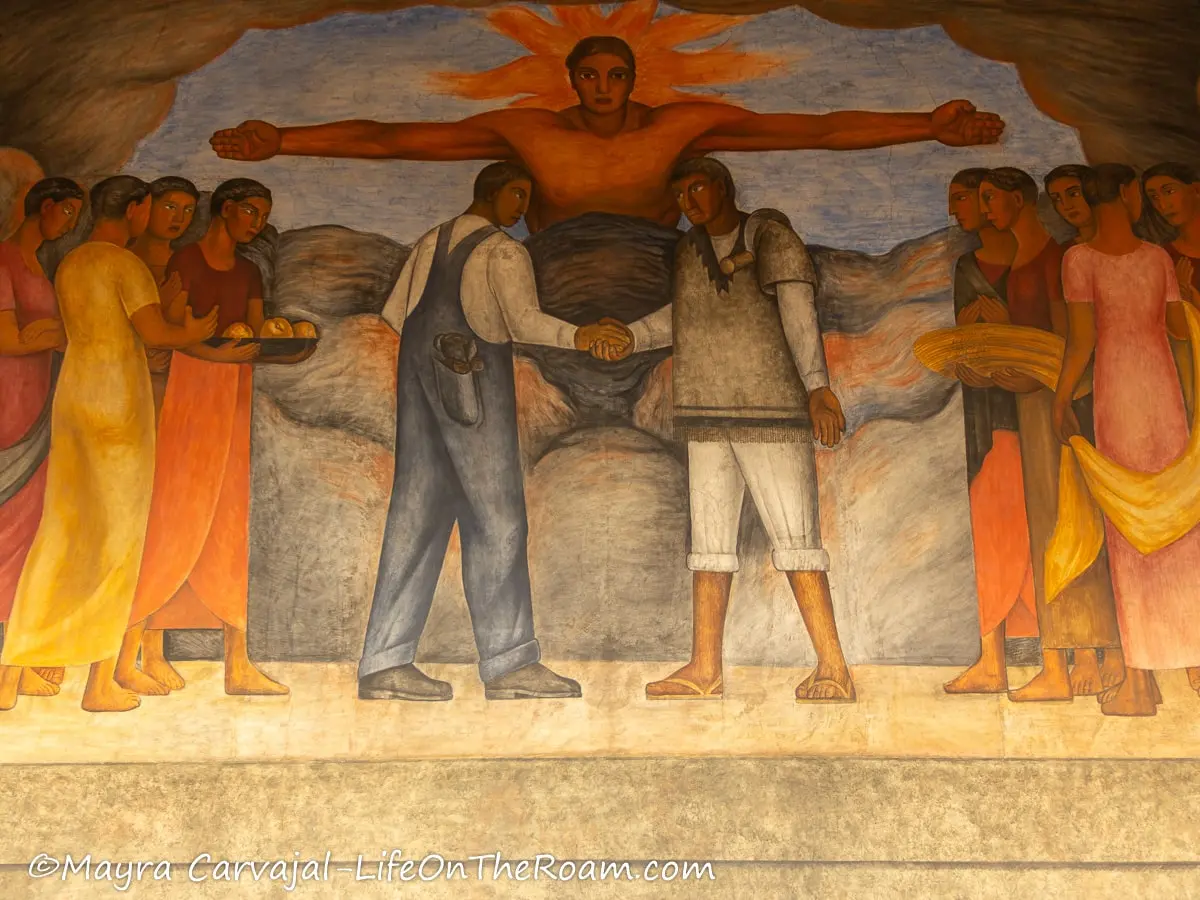
The Public Education Building is another place where you can see Diego Rivera’s murals in Mexico City. He started working on the frescoes in 1923, and by 1928 he had completed the three levels that surround the main patio of the central building.
On the first level Rivera takes us on a colourful trip around Mexico, showing us the traditions and celebrations of different regions of the country.
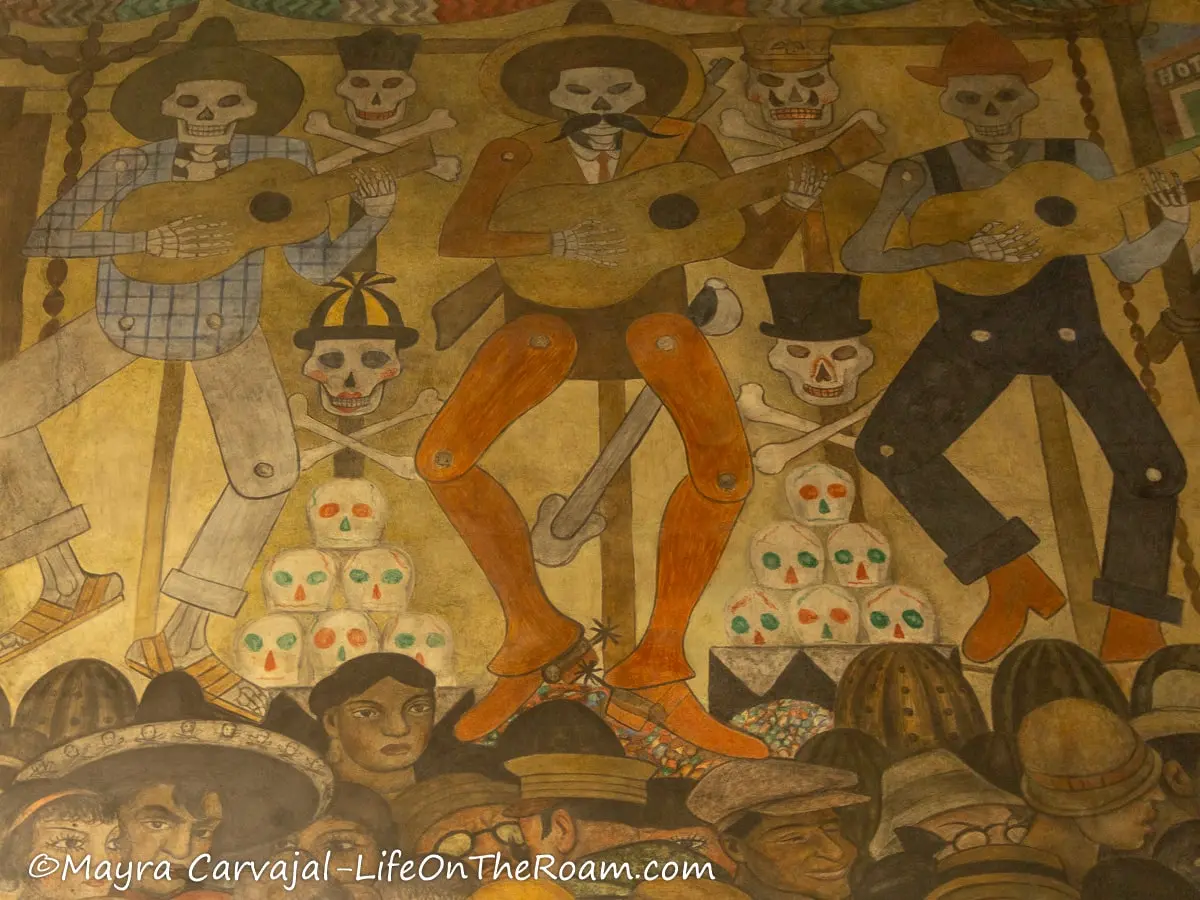
On the second level he opted for grisailles (monochrome painting in shades of grays) to depict symbols representing science and practices such as agriculture, medicine, chemistry, and x-rays.
Colours come back on the third level, where the murals have a strong political message criticizing capitalism and expressing support for the proletariat, the Mexican Revolution and the Marxist ideology.
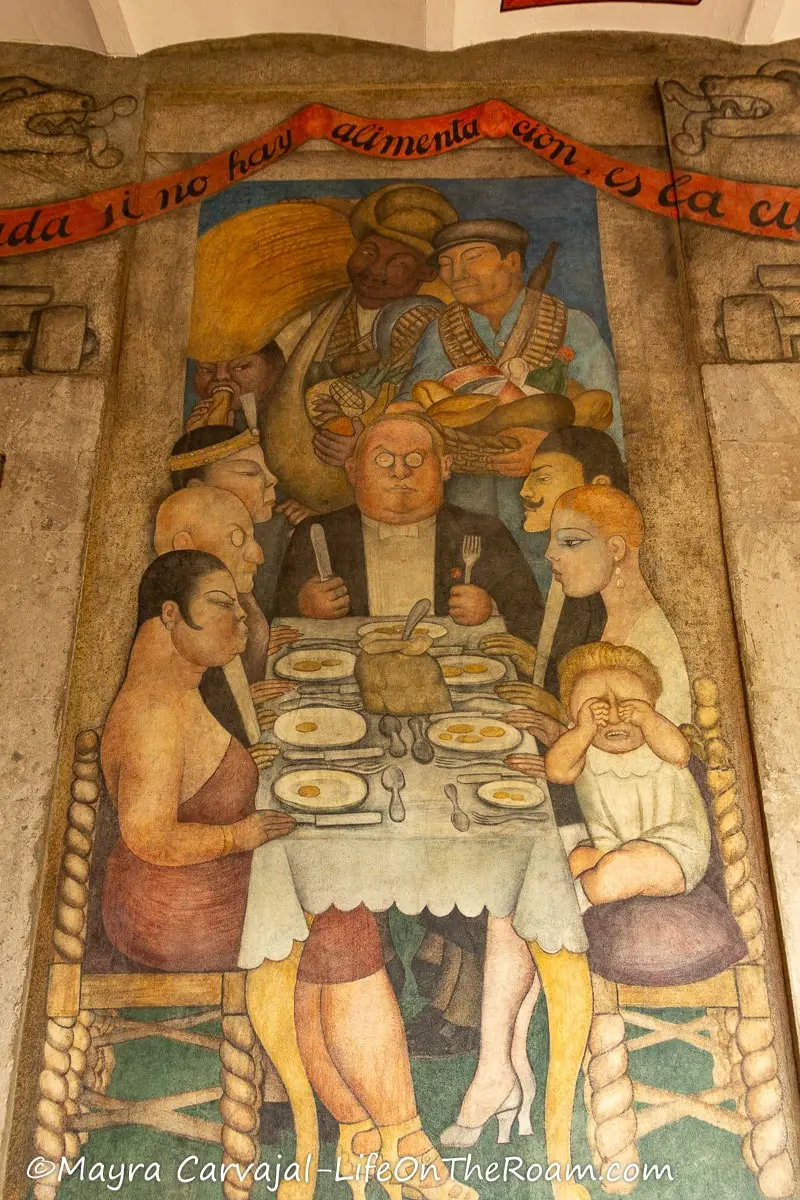
As usual, you’ll see Frida in the murals, as well as other well known figures of the time.
República de Argentina 28, Centro Histórico (Closest subway station: Allende (Line2); Open Mon. to Fri.: 9:30AM-4PM; Free admission (must leave photo ID at security)
Visit the National Museum of Art (Museo Nacional de Arte)
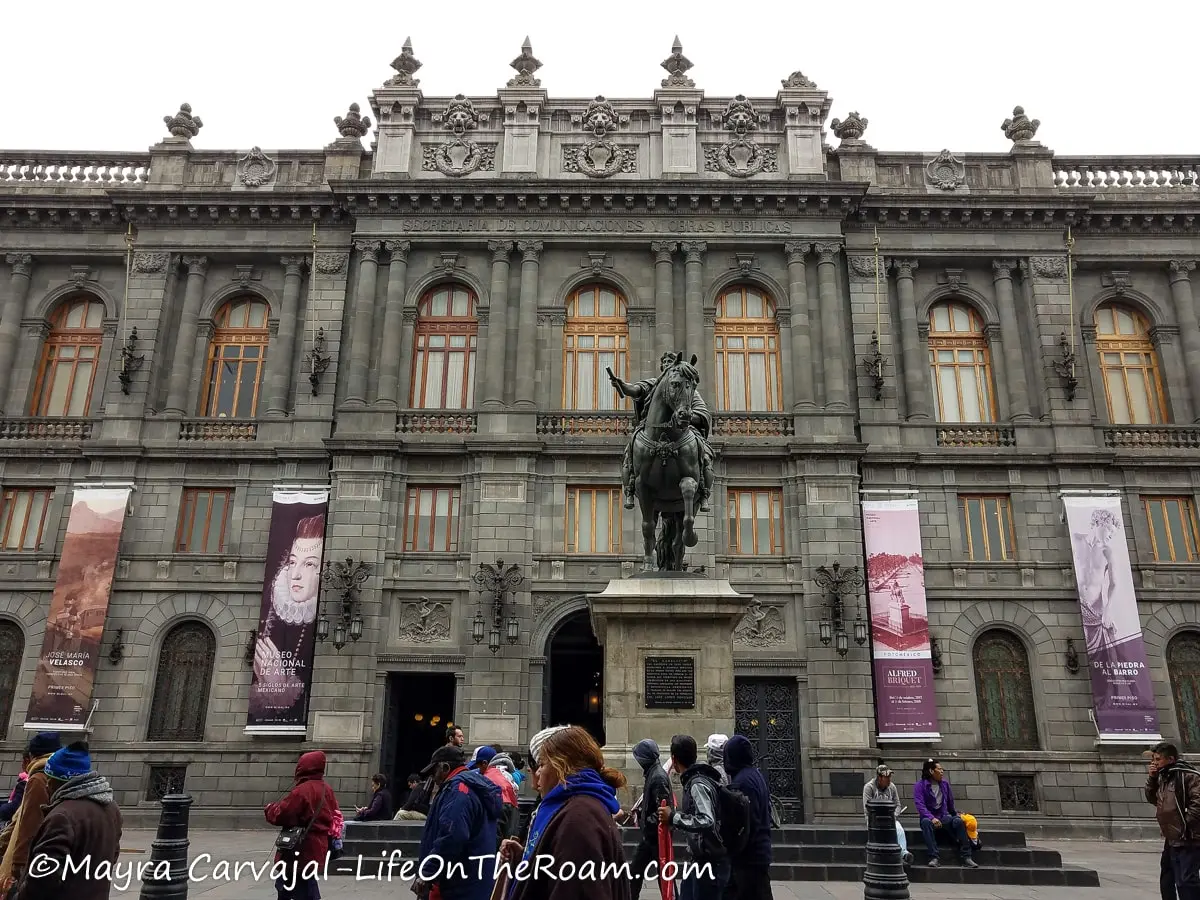
The National Museum of Art collection offers a glimpse of Mexican art produced between the second half of the 16th century and the first half of the 20th century, housed in a palatial building from the early 20th century.
You’ll find painting, sculpture, photography, textiles, silversmithing, and more, and work from well-known artists such as Diego Rivera and David Alfaro Siqueiros.
You can also see temporary international exhibits and sign up for workshops.
National Museum of Art
Calle de Tacuba 8, Centro Histórico; Closest subway station: Bellas Artes (Line 2); Open Tue. to Sun: 10AM-6PM. General admission: MXN$85.
Visit the Postal Palace (Palacio de Correos)

The main post office is one of the most beautiful buildings in downtown Mexico City (I would dare say, in all Mexico).
Also known as “La Quinta Casa de Correos”, its construction started in 1902, assembling elements from different parts of the world following the plans of Adamo Boari, an Italian architect and Gonzalo Garita, a Mexican engineer.
The beautiful clock crowning the entrance corner was made in Germany, the marble is from Mexico, and the intricate metalwork in bronze came from Italy.
The Postal Palace had the distinction of being one of the first buildings to have electricity, and an elevator.
Calle de Tacuba 1, Centro Histórico; Closest subway station: Bellas Artes (Line 2)
Have a Bite to Eat at The House of Tiles (Casa de Los Azulejos)
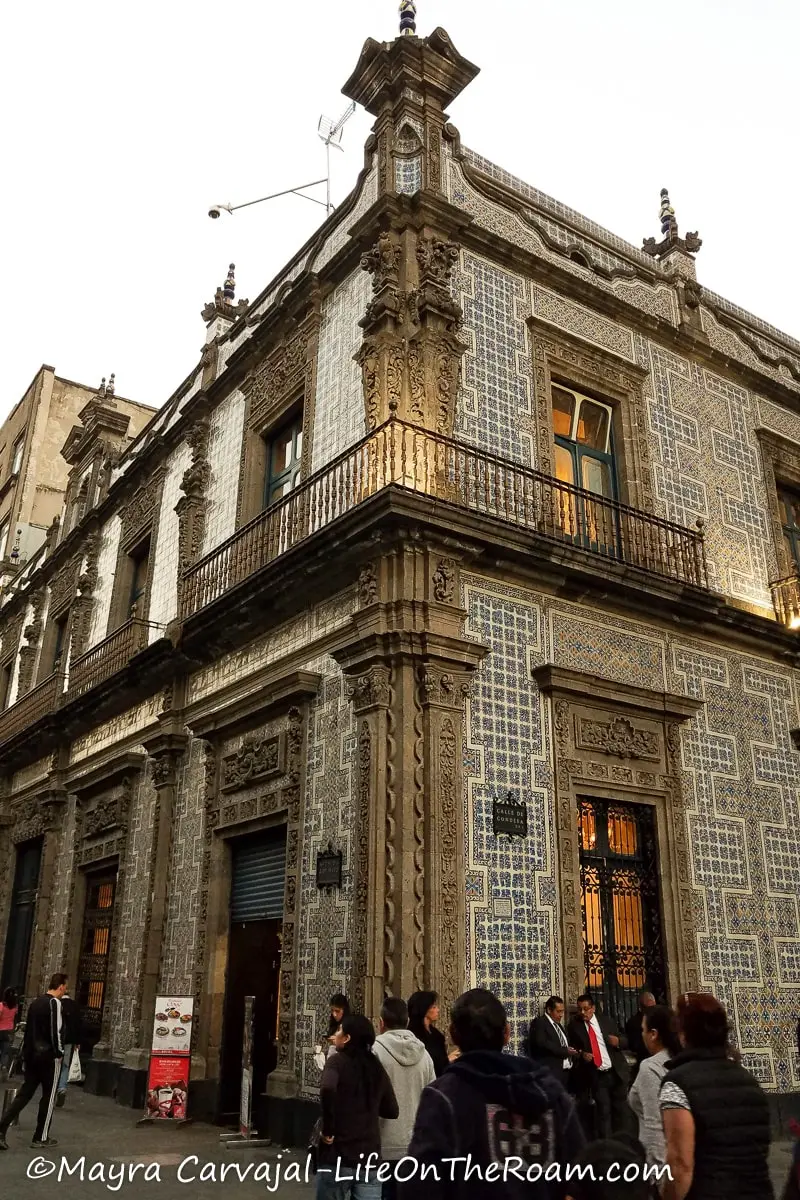
With highly-decorated blue, white, and yellow tiles covering the three sides facing the street, you can’t miss the House of Tiles. It reminded me of many of the façades of Puebla City, all covered in Talavera.
This big Baroque-style palace from the 18th century was originally the residence of a wealthy family, but today it’s a store (with a restaurant) part of Sanborns, a nationwide chain.
Step inside to see the pretty fountain and the murals decorating the dining space and don’t miss the crazy detailing on the soffit of the stairs.
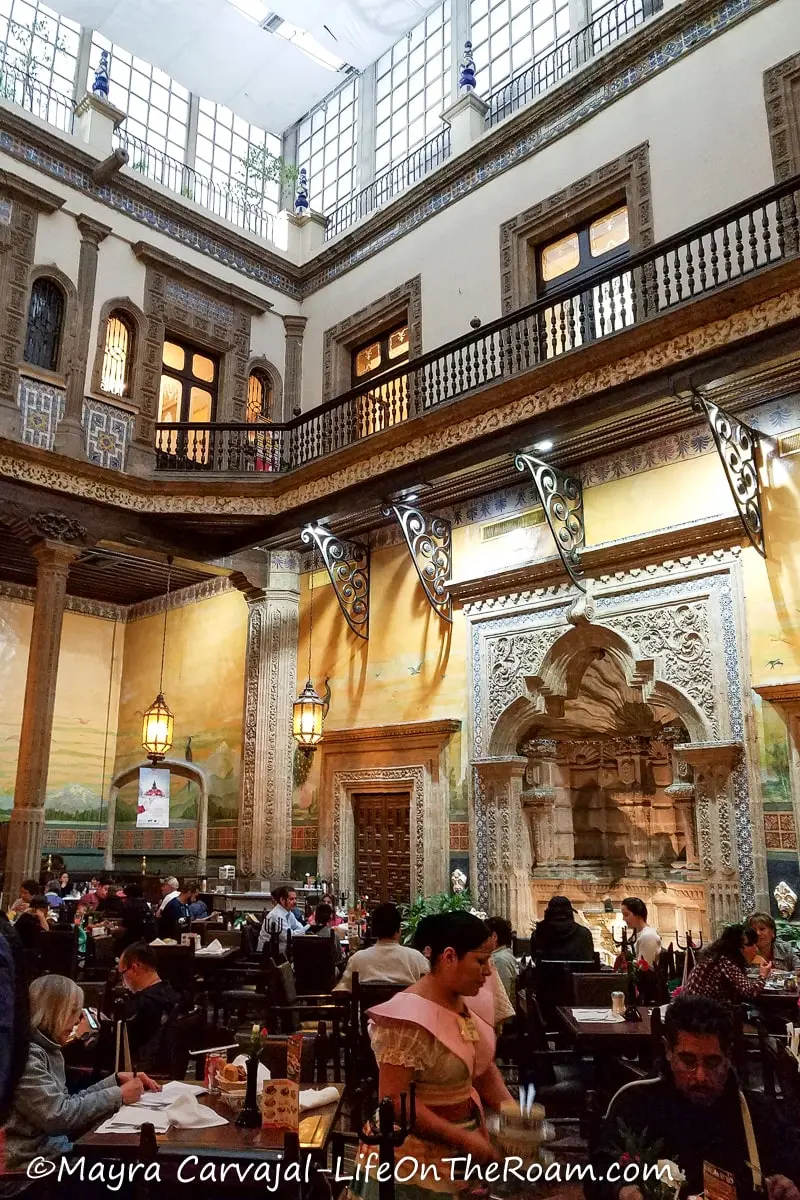
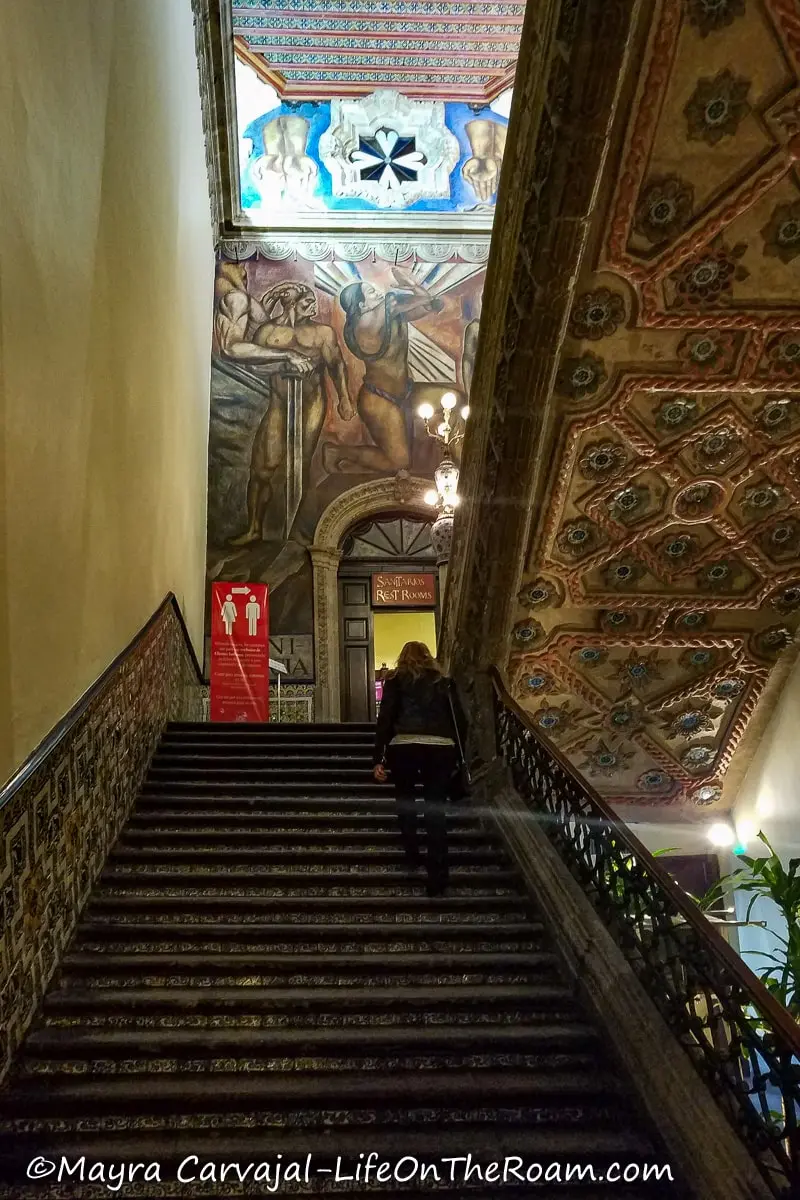
This place is a good option to get a bite to eat at a very reasonable price in a beautiful and calm setting. Don’t expect any gourmet food, though.
Avenida Francisco I. Madero 4, Centro Histórico; Closest subway station: Bellas Artes (Line 2)
Visit the Palace of Fine Arts (Palacio de Bellas Artes)
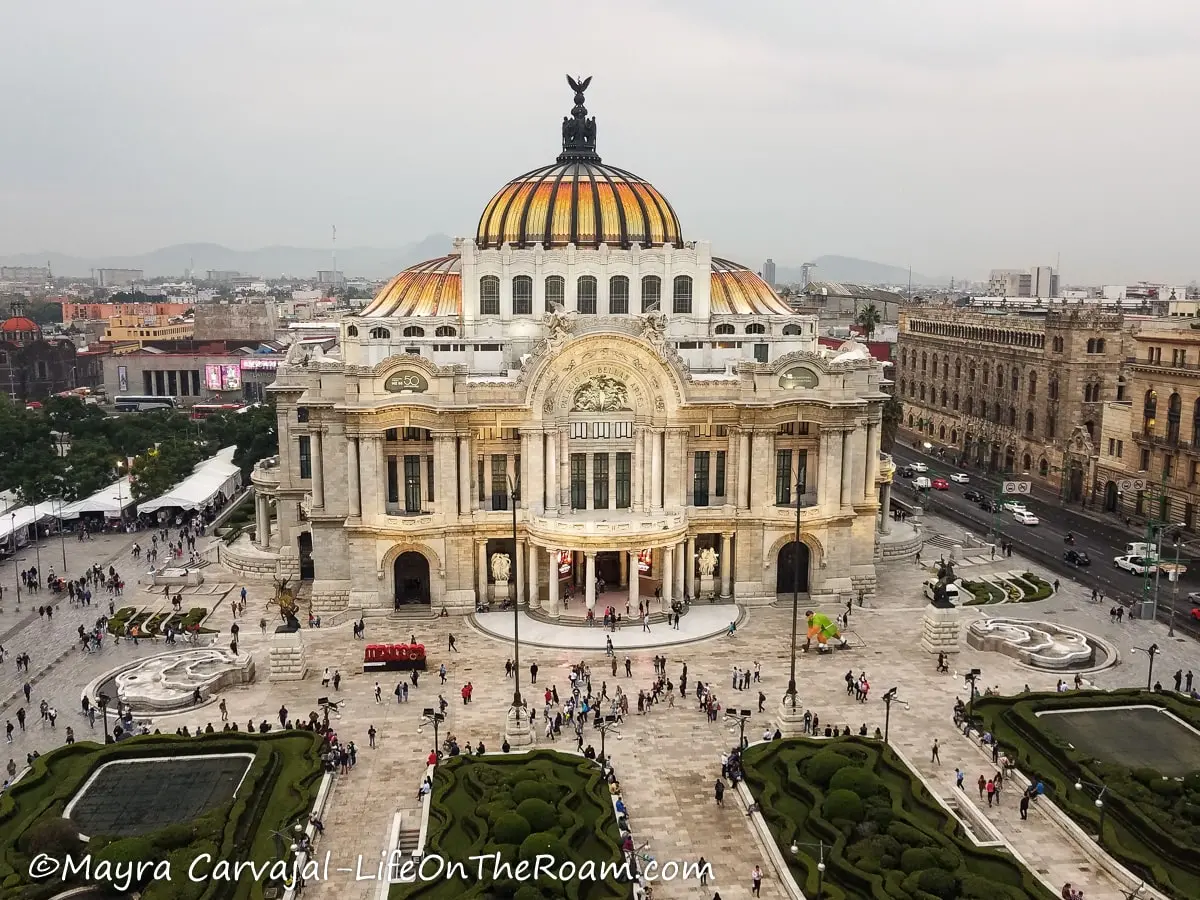
Beyond the gorgeous exterior of the Palace of Fine Arts (aren’t the domes absolutely fabulous?) oozing Art Nouveau style you’ll find several murals covering its interiors, surrounded by Art Déco details.
Renowned artists such as Rufino Tamayo, David Alfaro Siqueiros, José Clemente Orozco, and Diego Rivera created large frescoes inspired in historic, cultural, and social themes to adorn the walls of this building, erected in the early 20th century.
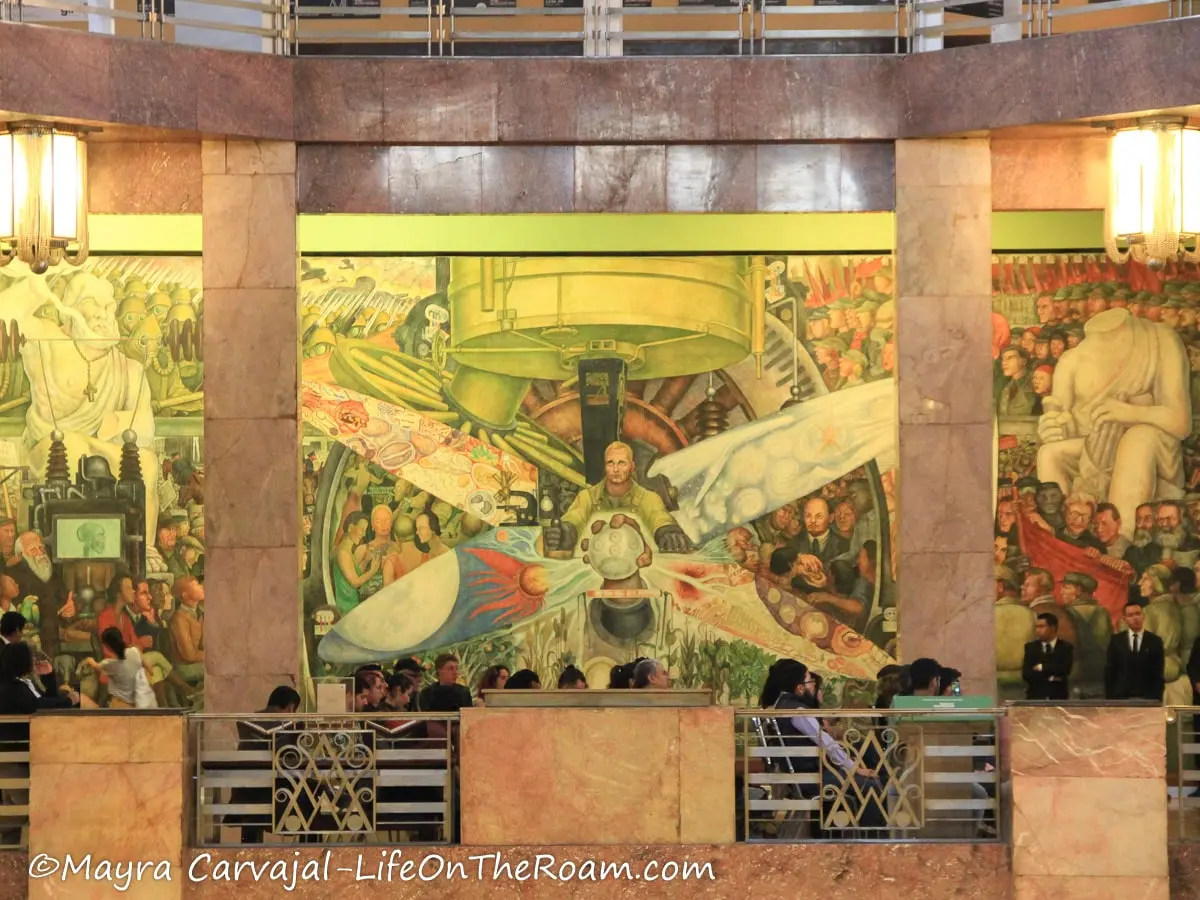
The Palace of Fine Arts is the place to go to fill your schedule with concerts, operas, or dance performances. You’ll also find several exhibition galleries, a museum with temporary exhibits (it was the house of the first museum of Mexico City), and the National Museum of Architecture on the top floor.
Bonus tip: a great spot for taking an aerial picture of the Palace of Fine Arts and the beautiful gardens is the terrace of Cafe Don Porfirio, located on the eighth floor of the Sears store right across. (Yes, believe it or not Sears stores still exist and they thrive in Mexico). You may have to wait for a table, order before you access the terrace, and have limited time to hang out, but the view is worth it!
Av. Juárez Esquina Eje Central, Centro Histórico. Open Tue. to Sun.: 11AM-5PM.
Relax at the Alameda Central Park
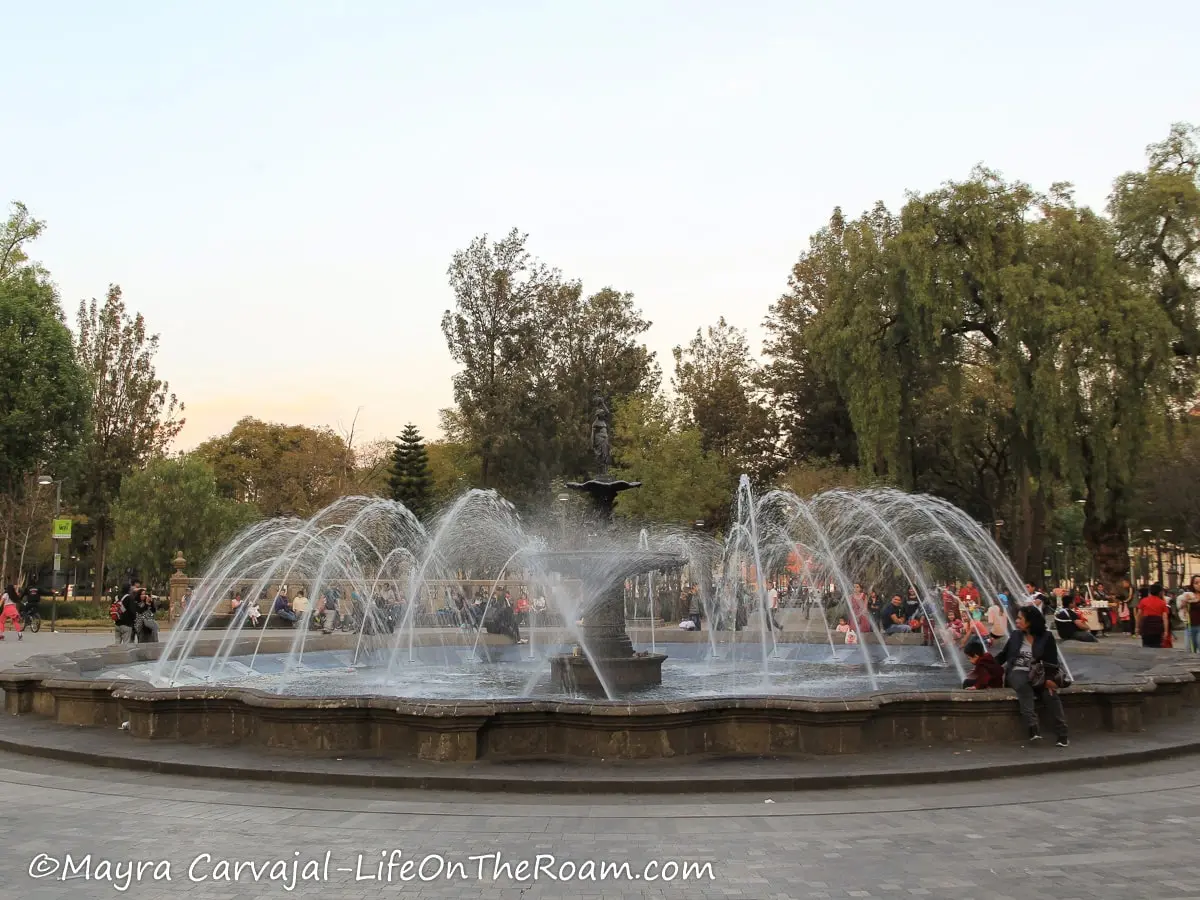
Take a break between museums at the Alameda Central (an alameda is a promenade with trees) -the oldest municipal park in Mexico City- and relax around its many beautiful fountains, sculptures and famous monuments such as the Hemiciclo a Benito Juárez, all made in marble.
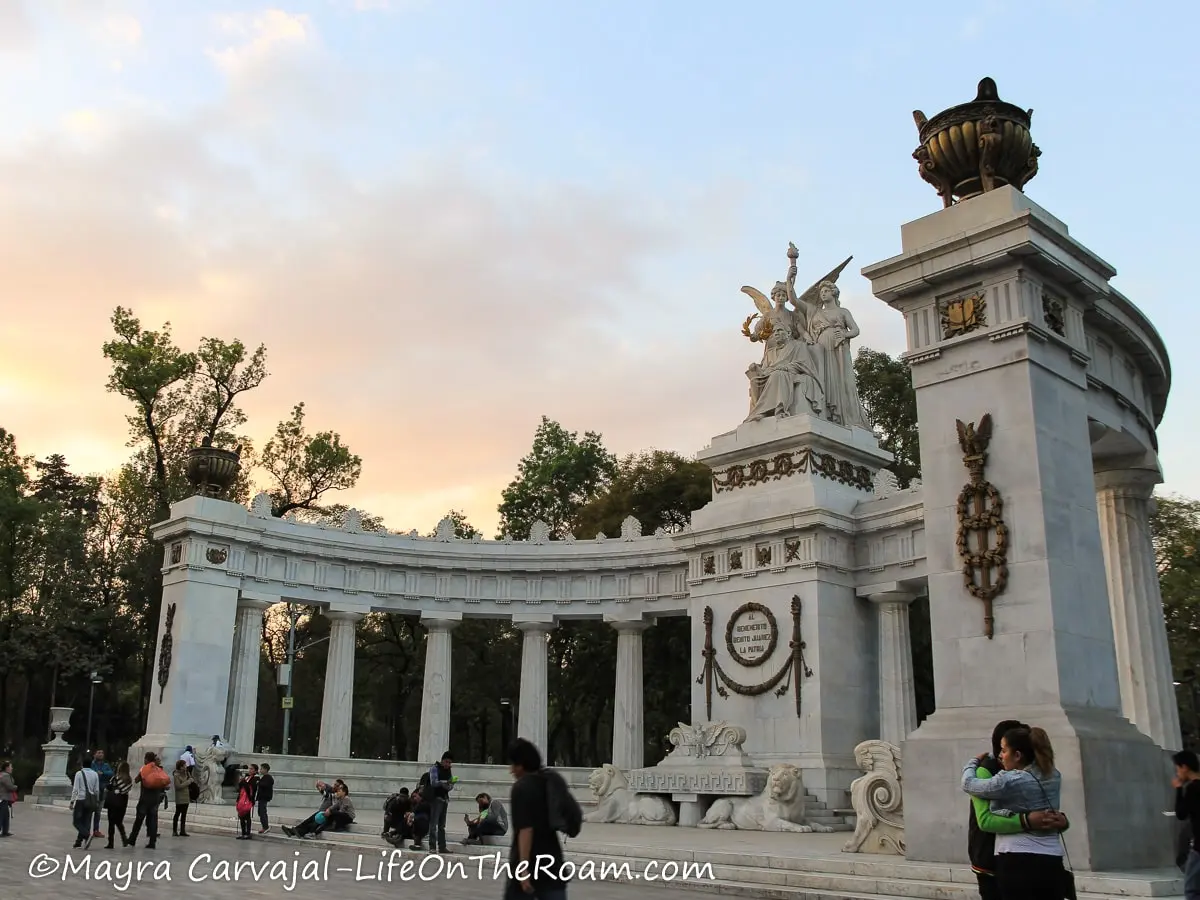
Stop by the park on the weekend and you’ll find a party: concerts, dancing, and other fun activities.
The Bellas Artes subway station that drops you right in the park has an entrance worth seeing: an Art Nouveau-style iron work gifted by France that is the replica of the structures created by Hector Guimard for the Métro in Paris.
To stay across this beautiful park and steps away from the surrounding museums check these highly-rated hotels
–Hilton Mexico City Reforma: this hotel has spacious and modern rooms with AC, coffee maker, and a desk. Some rooms include a breakfast buffet, the Wi-Fi fee, and some have views of the Torre Latinoamericana. It has an onsite restaurant, a rooftop pool, an indoor pool, a spa, and a gym.
Book your stay at the Hilton Mexico City Reforma
–Hotel Casa Lomah Alameda: this small hotel, located on the upper floor of a mall, is also steps away from the Alameda. It has a less “corporate brand”/polished look, with more personalized details that give it a local flavour, as if you would be staying in a big house with an outdoor terrace. This option is better suited for the cooler months as there is no AC in the rooms.
Book your stay at Hotel Casa Lomah Alameda
Enjoy the View from Torre Latinoamericana
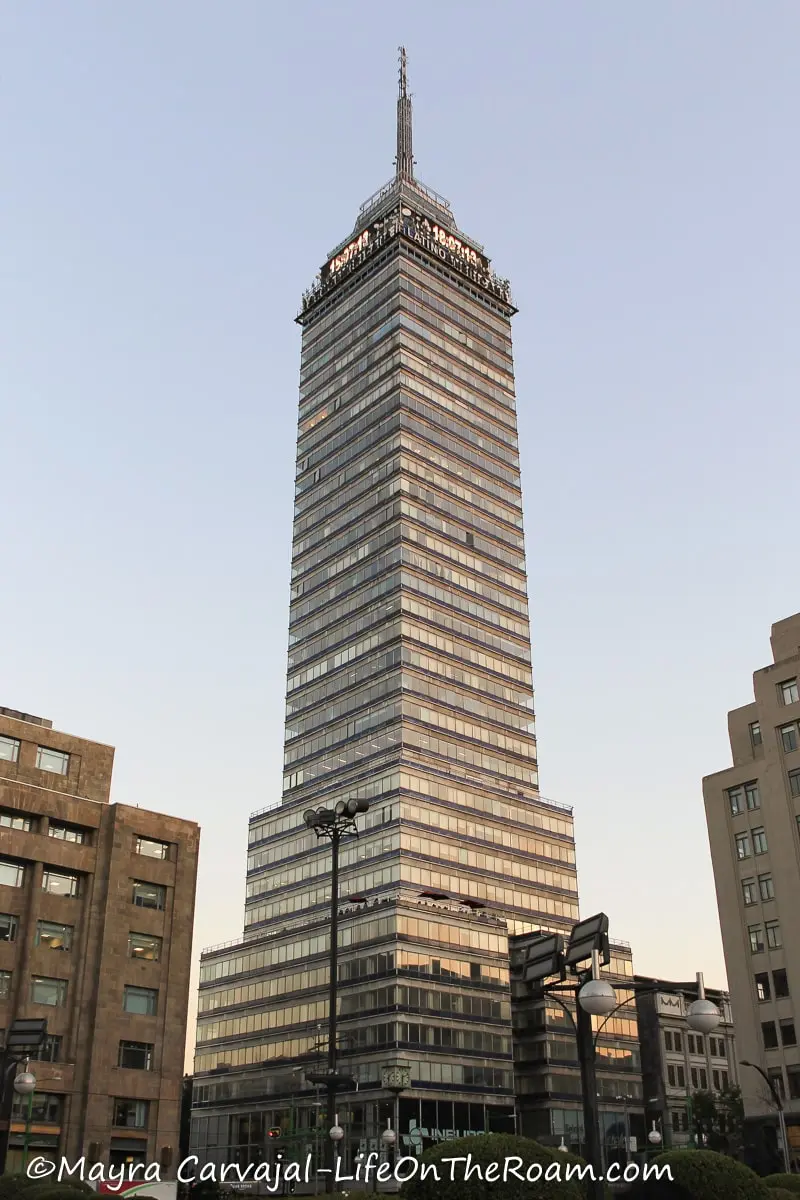
Go to the top of what used to be the tallest skyscraper in Latin America until 1972, and enjoy a panoramic view of the Historic Center of Mexico City and its surroundings from the 44th floor.
The Torre Latinoamericana, built in 1956, is considered an engineering marvel for being erected on muddy soil, in a seismic area. It has passed the test of resisting strong earthquakes (8.1 in the Richter scale) with flying colours.
The tower has a café, a bar, and a restaurant from where you can have a meal with a view, as well as two museums where you can learn about the history of Mexico City.
Eje Central Lázaro Cárdenas 2, Centro Histórico; Closest subway station: Bellas Artes (Line 2)
Visit the Museo Mural Diego Rivera
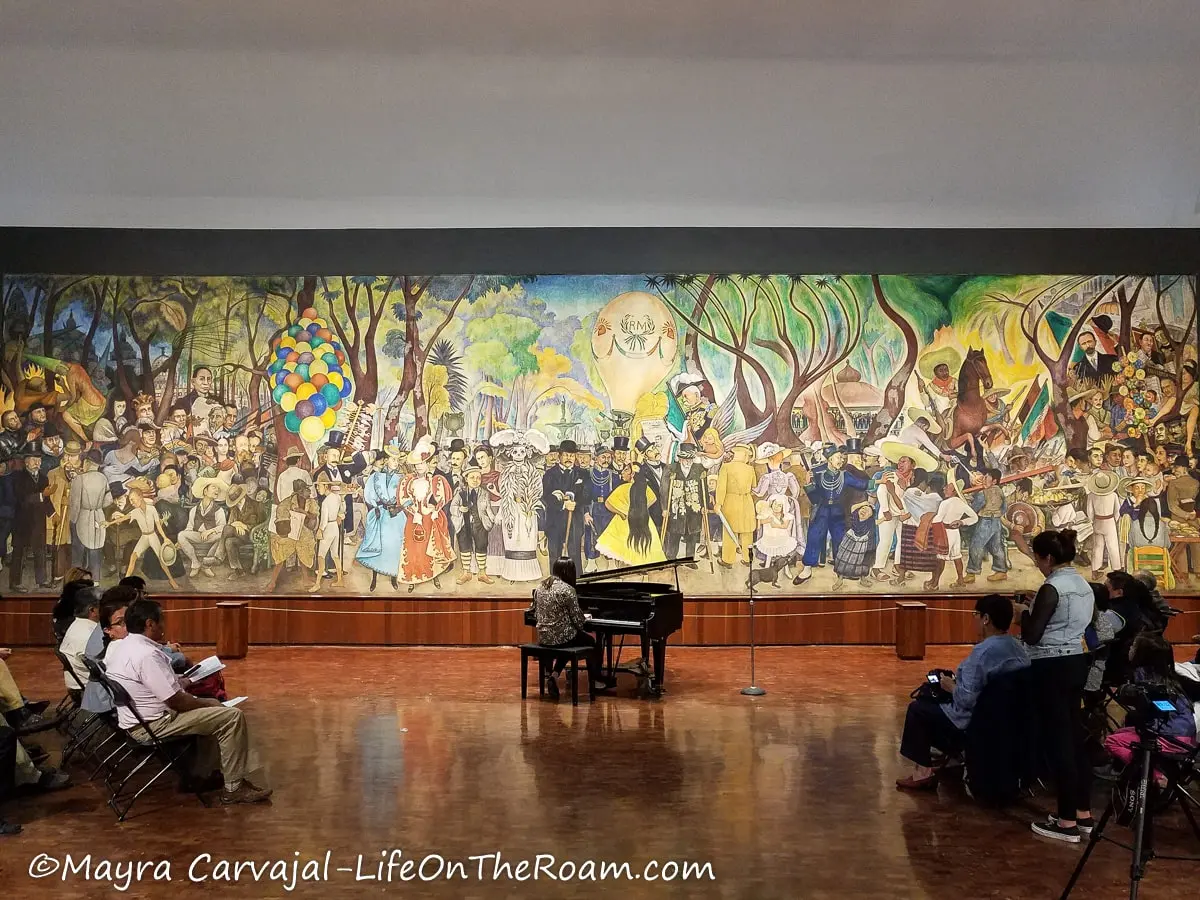
Come to this museum to see one of the most famous murals by Diego Rivera: “Sueño de una Tarde Dominical en la Alameda Central” (“Dream of a Sunday Afternoon at the Central Promenade”).
This mural was painted in 1947 for the dining room of Hotel El Prado, located across the Alameda Central. In 1985 an earthquake destroyed the hotel, but the fresco survived.
More than 300 people worked around 12 hours to relocate the 4.17 x 15.67 mts. mural, with a weight of 35 tons, to its temporary home until the completion of this site. You can see pictures of this ordeal at the museum.
Like most of Diego Rivera’s murals , it depicts the history of Mexico in its three sections, from the colonization to the independence to the Mexican Revolution to the Mexico of the mid-20th century.
Rivera included in the mural famous writers, family members (his daughters, Frida, and himself), and the Catrina.
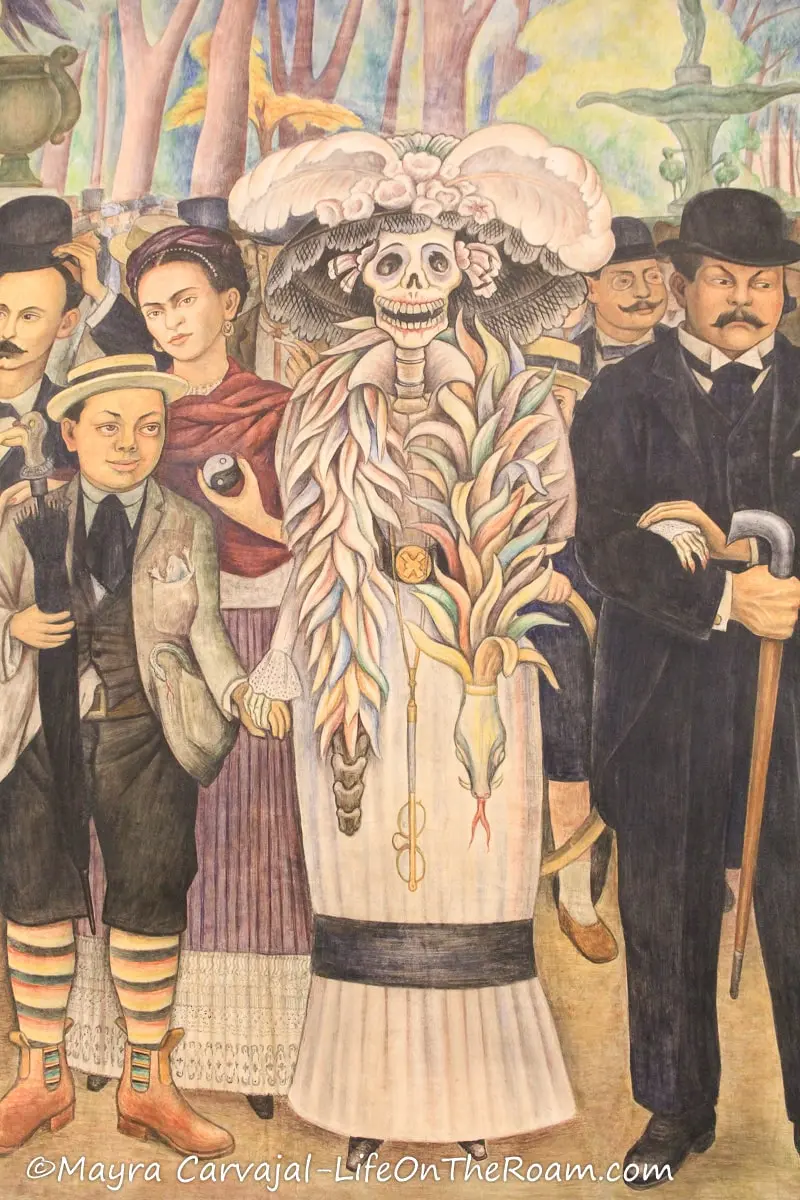
The Catrina is a character created by José Guadalupe Posada -skeletons with fancy hats and dresses that you find all around Mexico- born as a critique to the indigenous people who dressed up pretending to be of European origin.
The space also hosts temporary exhibits and concerts.
Calle Colón Balderas s/n, Colonia Centro; Closest subway stations: Hidalgo (Line 2); Open Tue.to Fri.: 10AM-6PM; General admission: MXN$40
Go to the Franz Mayer Museum
This is the museum to go for everything decorative arts. The Franz Mayer museum houses an extensive art & design collection with every category imaginable: furniture, sculpture, painting, woodwork, textiles, jewelry, ceramic, silversmithing, photography, and more.
The permanent collection includes objects from Mexico and around the world dating from the 15th century to the 20th century, in addition to interesting temporary exhibits.
In the 16th century the building housed a hospital attached to a church and then a craft market before becoming a museum. On the walls you can still see remains of the original murals.
It has a cloister featuring a fountain from the 18th century and a beautiful garden perfect for relaxation. Make sure to stop at the café to see the wonderful tilework on the lower wall and around the niches.
Fine tune your artistic skills enrolling in one of the workshops or attend a weekend concert.
And since you made it here, stop by the Church of San Juan de Dios next door and see its beautiful façade.
Franz Mayer Museum
Av. Hidalgo 45, Centro Histórico; Closest subway station: Bellas Artes (Line 2); Open Tue. to Fri.: 10AM-5PM; Sat & Sun.: 11AM-6PM; General admission: MXN$85
Learn About History at the Museum of Memory and Tolerance (Museo Memoria y Tolerancia)

Oh, that would never happen again!… people say about the horrors of the holocaust. But when you learn about the warning signs that were ignored you realize that history repeats itself if you don’t pay attention.
The Museum of Memory and Tolerance is a sobering exhibit with a heavy focus on the holocaust and the circumstances that allowed the rise of Adolf Hitler and his party. There is a smaller section dedicated to genocides that happened in other parts of the world: Armenia, Rwanda, Guatemala, ex-Yugoslavia, Cambodia, and Darfur.
The display consists mainly of text (Spanish only), pictures, some videos -with an audio guide available in English for a small extra cost- and a few artifacts and installations: a train wagon where they transported victims to the concentration camps in Poland, instruments to measure facial features to determine “racial purity” and a scale model of the chamber gas and crematorium in Auschwitz-Birkenau.
A small section also addresses issues with human rights and discrimination.
Plaza Juárez, Centro Histórico; Closest subway station: Bellas Artes (Line 2);Open Tue. to Fri: 9AM-6PM, Sat. & Sun.: 10AM-7PM; General admission: MXN$115 (MXN$140 with audio guide or guided visit).
Have Fun at the Museum of Popular Art (Museo de Arte Popular)

Saving the best for last! This is my favourite museum in downtown Mexico City and the most fun: full of colour, bursting with creativity, and showcasing the wonderful work of artisans across the country.
You’ll see folk art pieces representing the different cultures and traditions of Mexico, showcasing old techniques and a variety of materials: pottery, soda cans, papier maché, textiles, cardboard, glass, wood, and more.
Nature and death, as well as religion intertwined with the indigenous cosmology are common themes represented in the artwork, with lovely skeletons cheerfully recreating daily life scenes.
There are samples of emblematic folk art pieces such as trees of life, mojigangas, alebrijes, and the stunning Huichol art.
If you’re lucky you may find one of the most impressive pieces of Huichol art right here: the “Vochol”.
It’s a Volkswagen beetle is covered with 2,277,000 glass beads and was completed by Francisco and Kena Bautista (with the help of six other people), and has travelled around the world since its completion in 2010.
The “Vochol” has been around Mexico, the United States, France, Germany, Belgium, Spain, China, and England. I hope it’s here when you visit because it’s something you don’t see every day.
The museum also offers workshops where you can create your own folk art piece.
Revillagigedo 11, Colonia Centro; Closest subway station: Juárez (Line 3); Open Tue. to Sun.: 10AM-6PM; General admission: MXN$60.
The Historic Center of Mexico City is an essential part of any travel itinerary to the capital of Mexico. Nowhere else in the country you’ll find so many museums and so many cultural activities. Save this post to plan your Mexico City itinerary and share it with a friend.
BOOKING FLIGHTS AND ACCOMMODATIONS
Book your flight without losing your shirt
We check Momondo to find great deals to book our flights. Also, check Great Escape: it combines the listings from Expedia, Kiwi, Kayak, (and Skyscanner on the premium service) to find the best airfares.
To find a place to stay for less
Booking.com: this site combines everything under the sun. You’ll find hotels, apartments, B&B, hostels, rooms, etc., with all sort of filters to make your search a breeze.
Hotwire: the first site I check when we plan to stay at a hotel for a few nights. You can save anything from 20% to 60%. Use the search filter to find what you want and you’ll end up with three listings that match your criteria. You’ll know which one you’ll get after you book. If you can handle a little bit of uncertainty you can score big savings.
House Sitting: you take care of people’s pets and house for free while staying for free. It’s the closest thing to experiencing a place “like a local”. But it comes with responsibilities… Are you an animal lover? It may become your new way to travel.
To get travel insurance
SafetyWing: travel medical insurance that gives us peace of mind knowing that we’re covered in case of emergency. It’s convenient, affordable, and suitable for digital nomads who spend a long time outside their home country.
Check the full list of travel resources on my Resource Page for more options and savings
I really want to visit the Evolution of the Historic Center at the Zocalo Subway Station! Definitely adding these places to my bucket list!
It’s interesting to see the large-scale models showing how the city was transformed over the years
Wow, it is really informative and inspirational article! I love Mexico but we have never been in Mexico City. I hope I`ll see this historical center one day, maybe when my kids will be a little bit older.
If you love culture, art, and architecture, you’ll love Mexico City